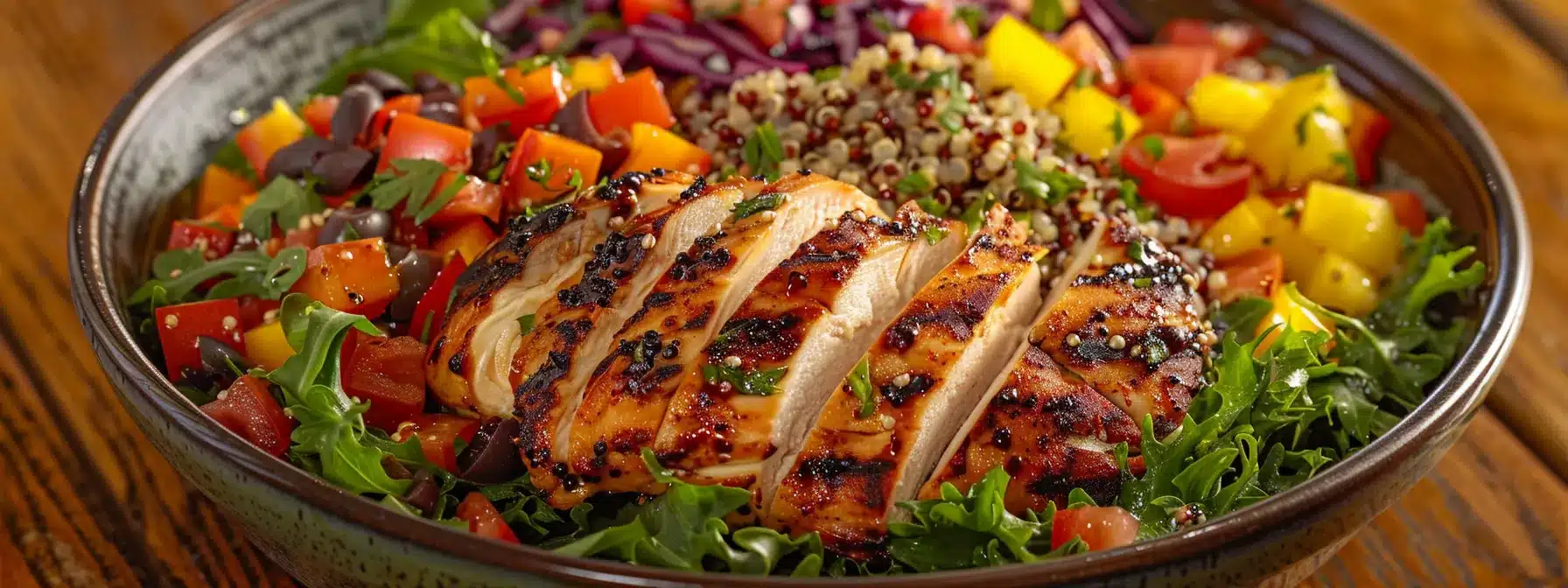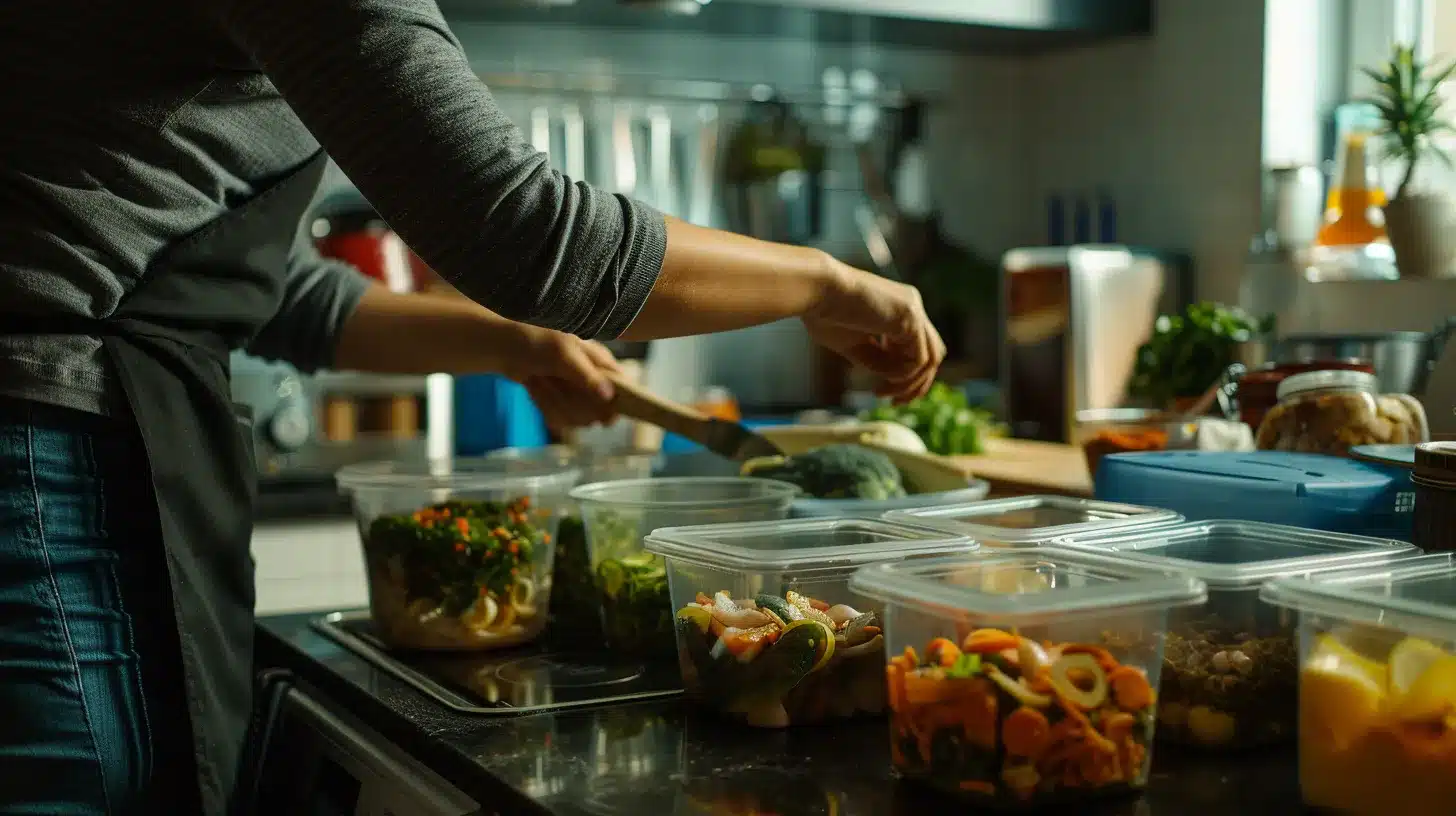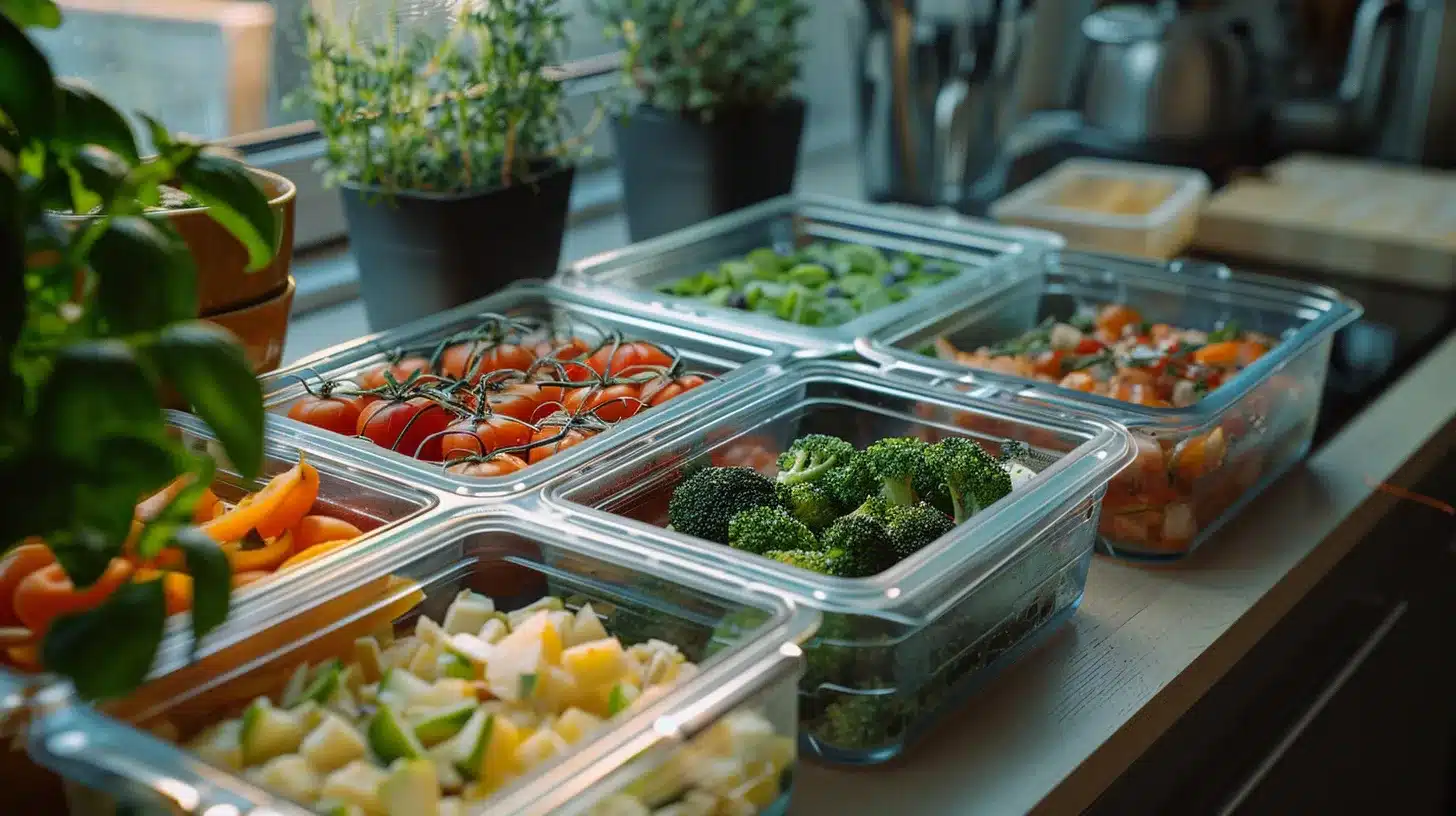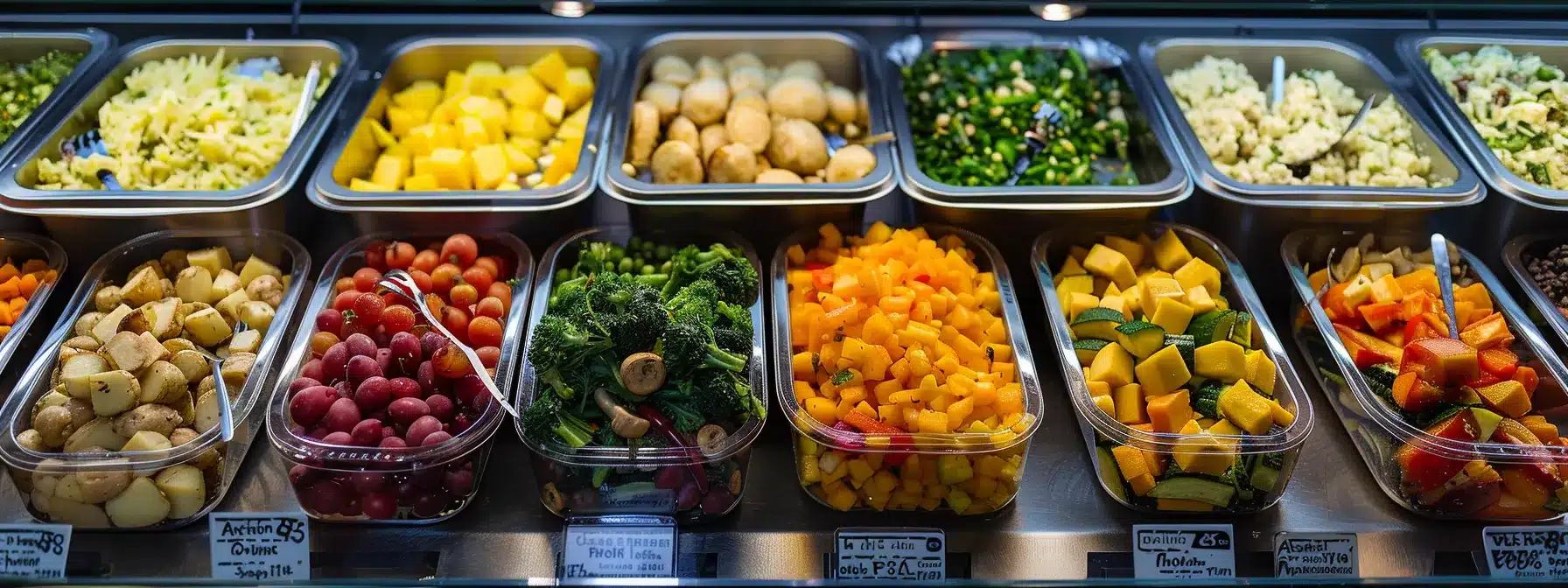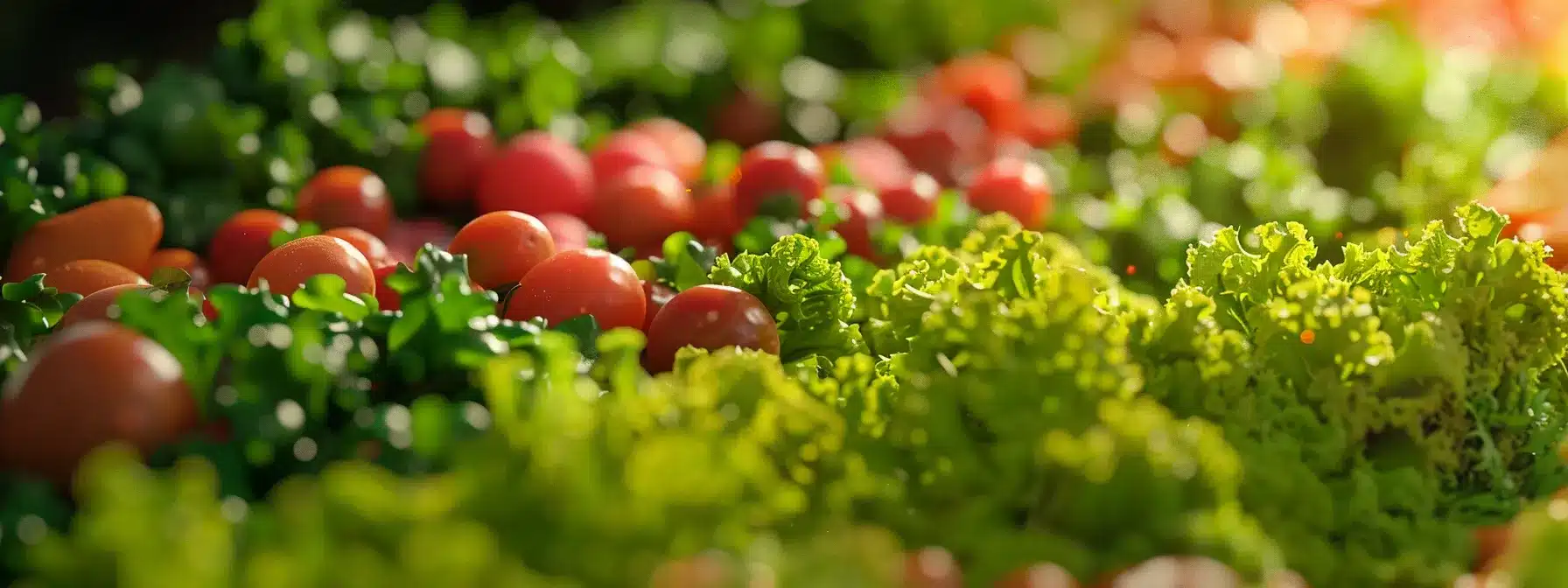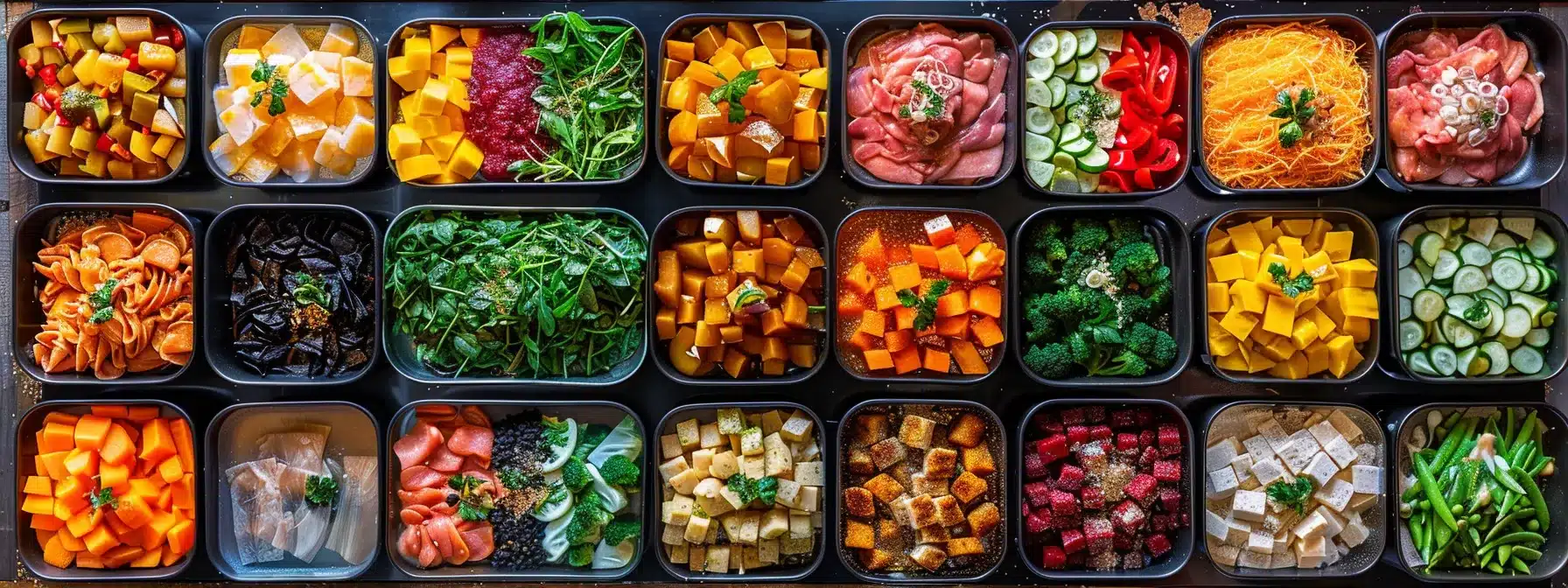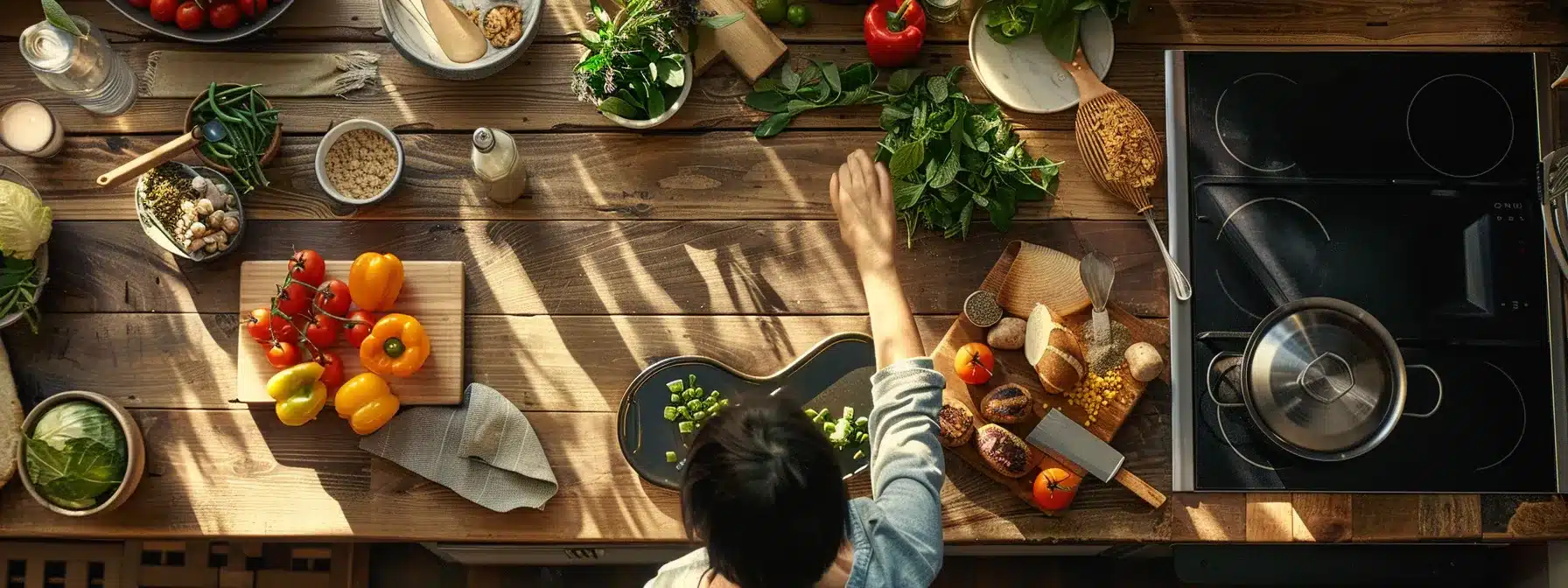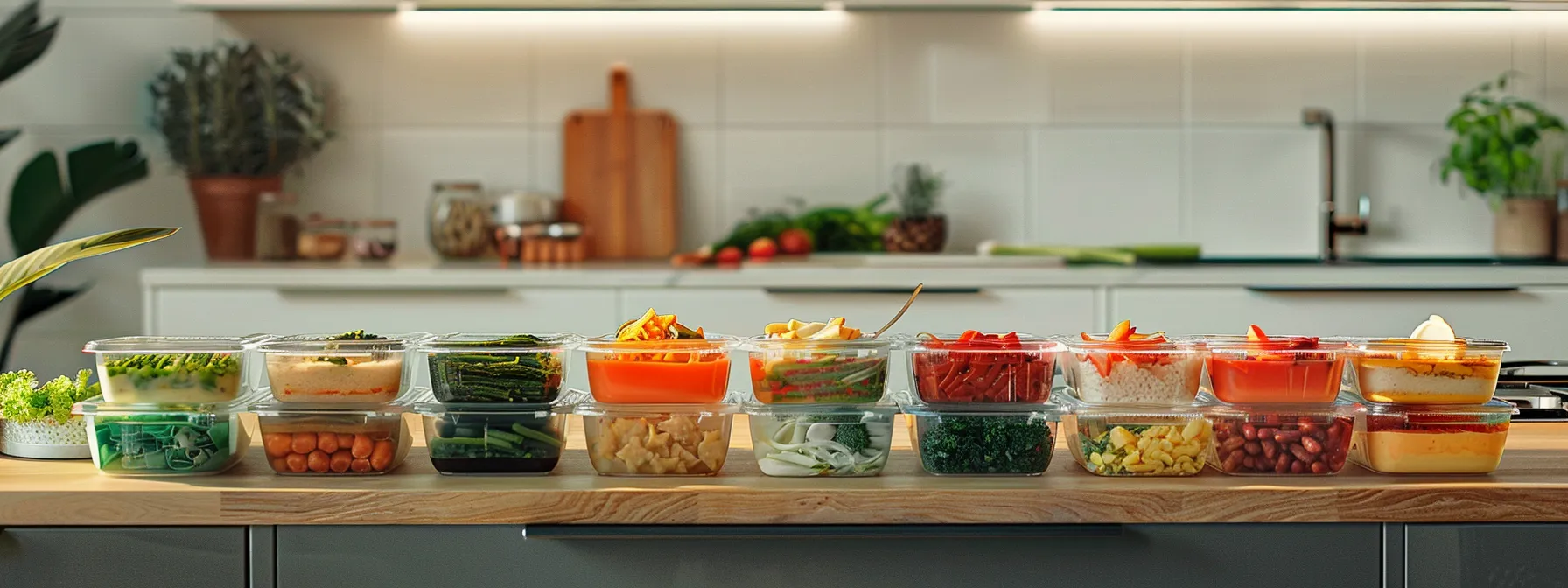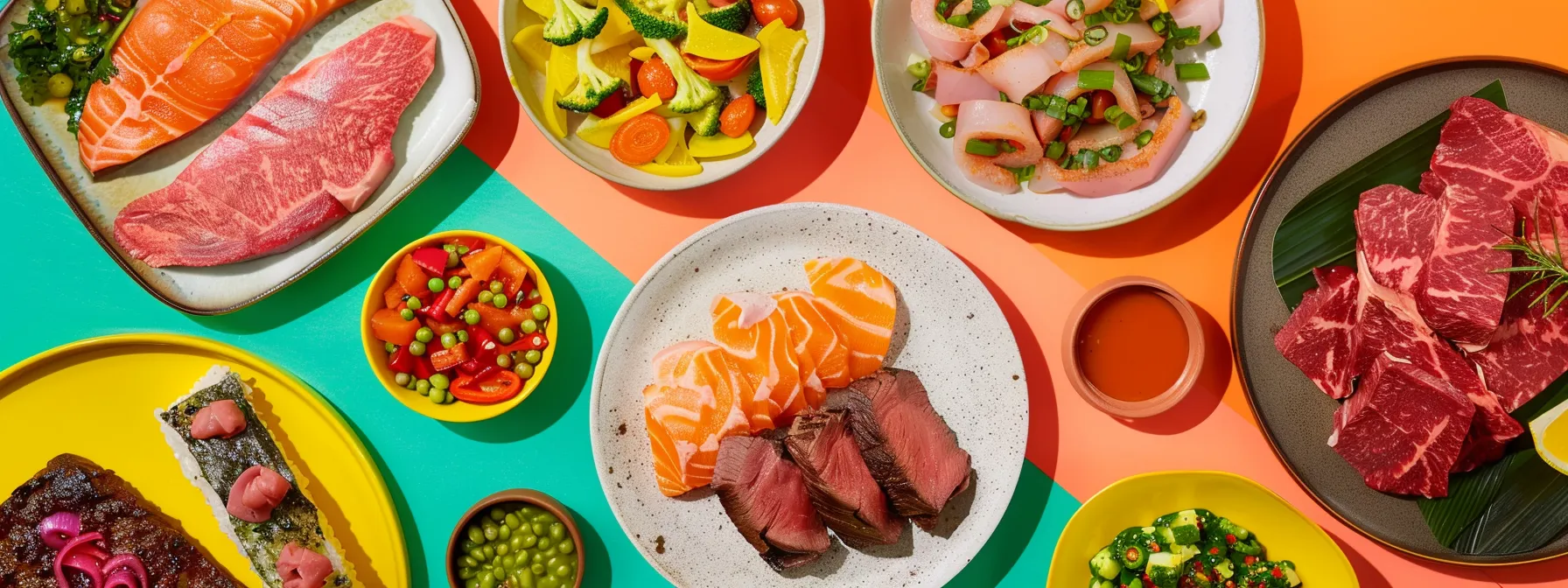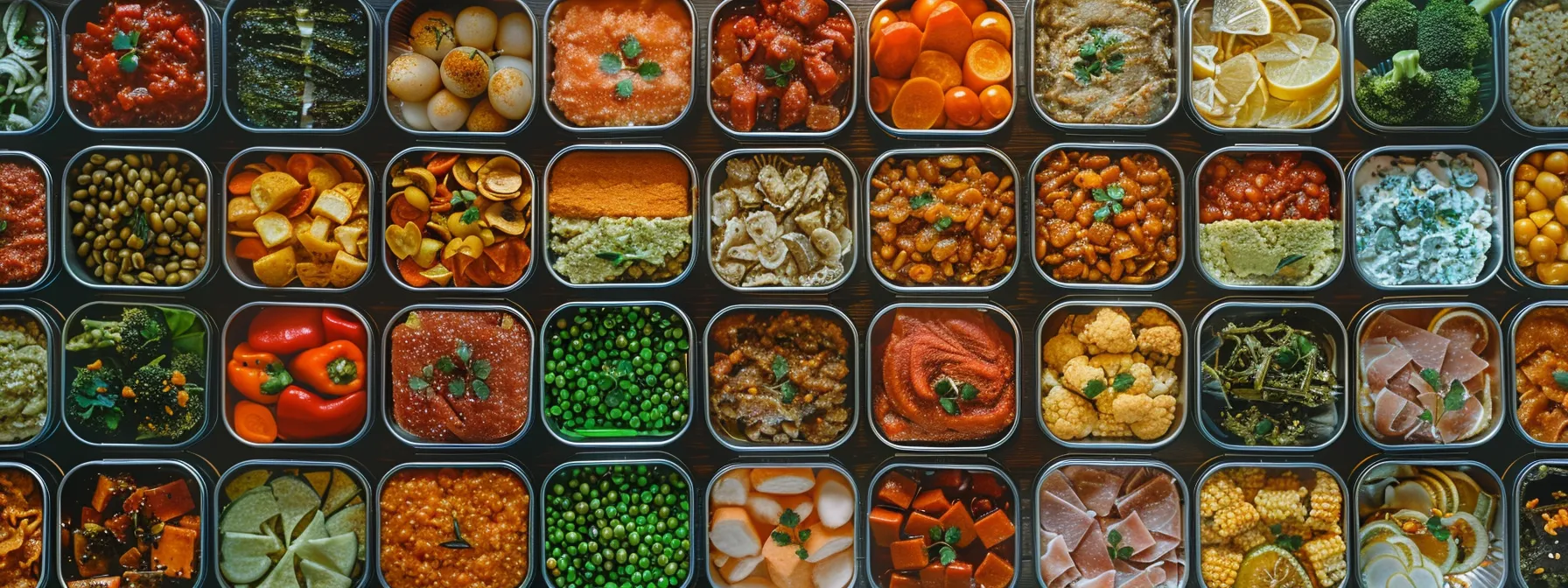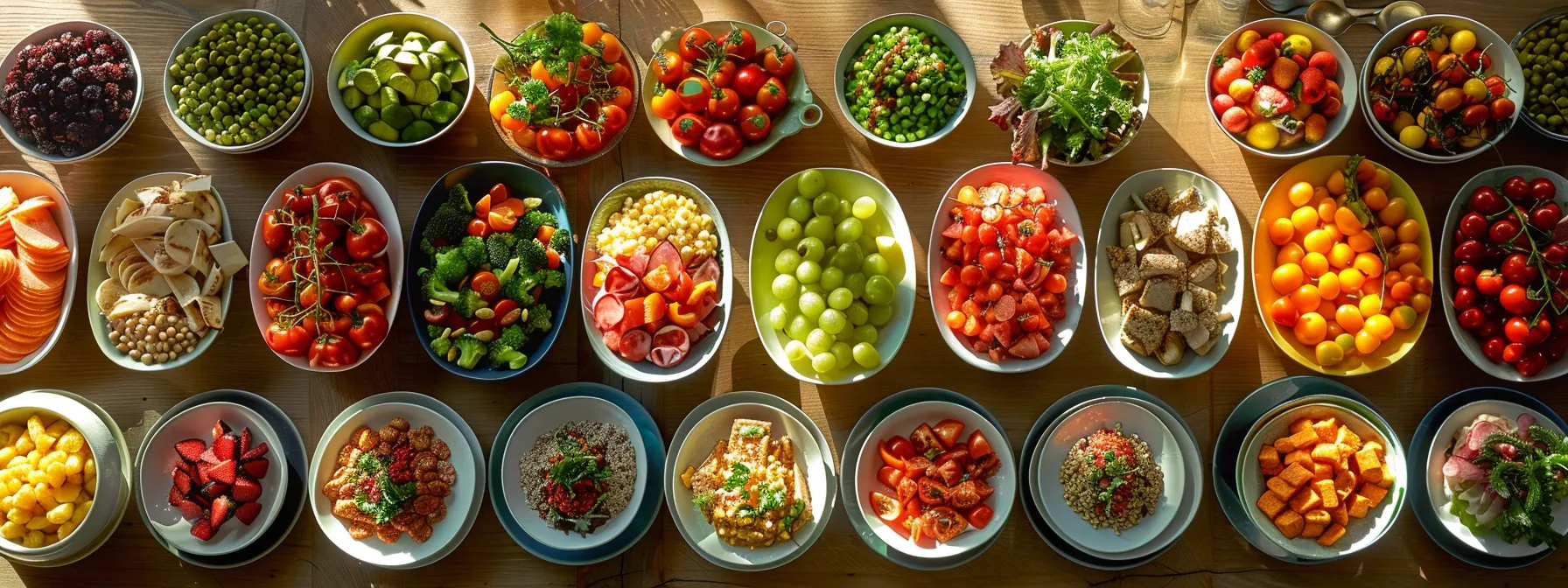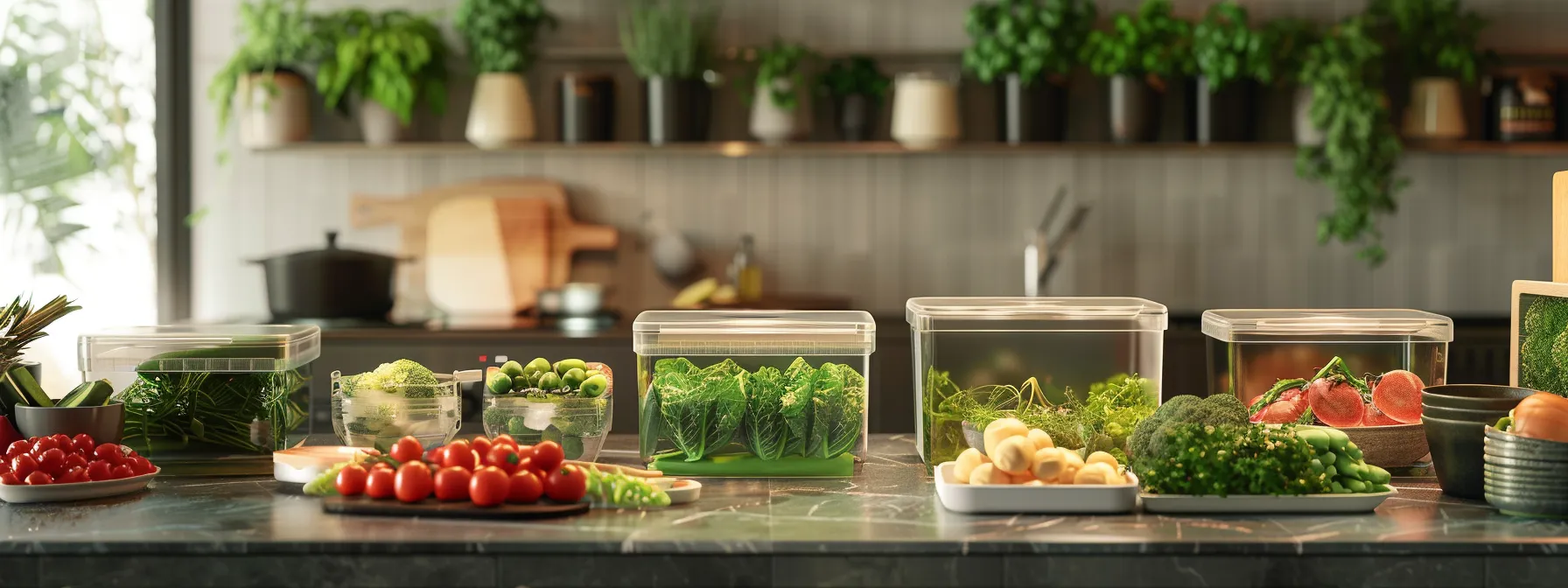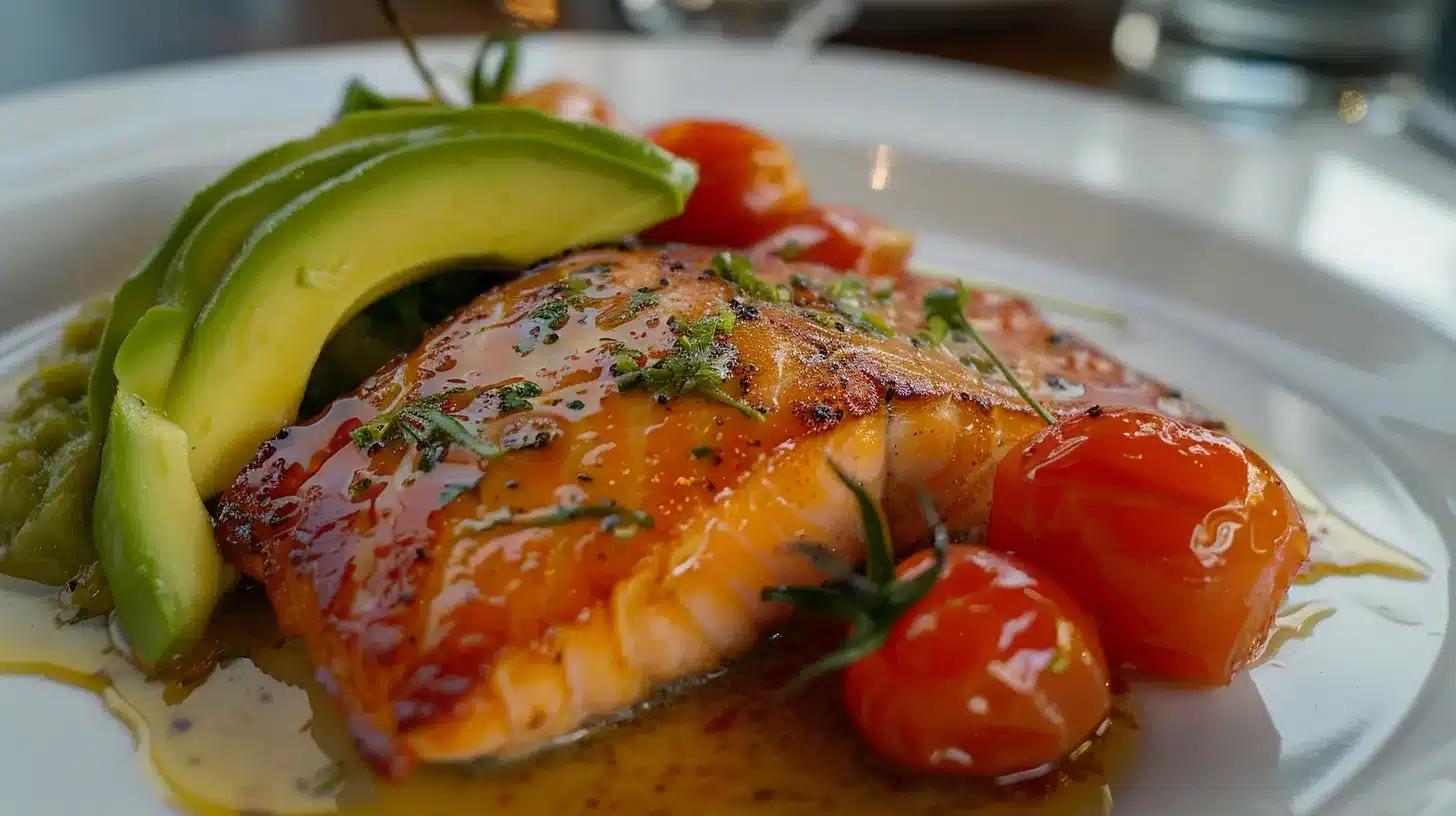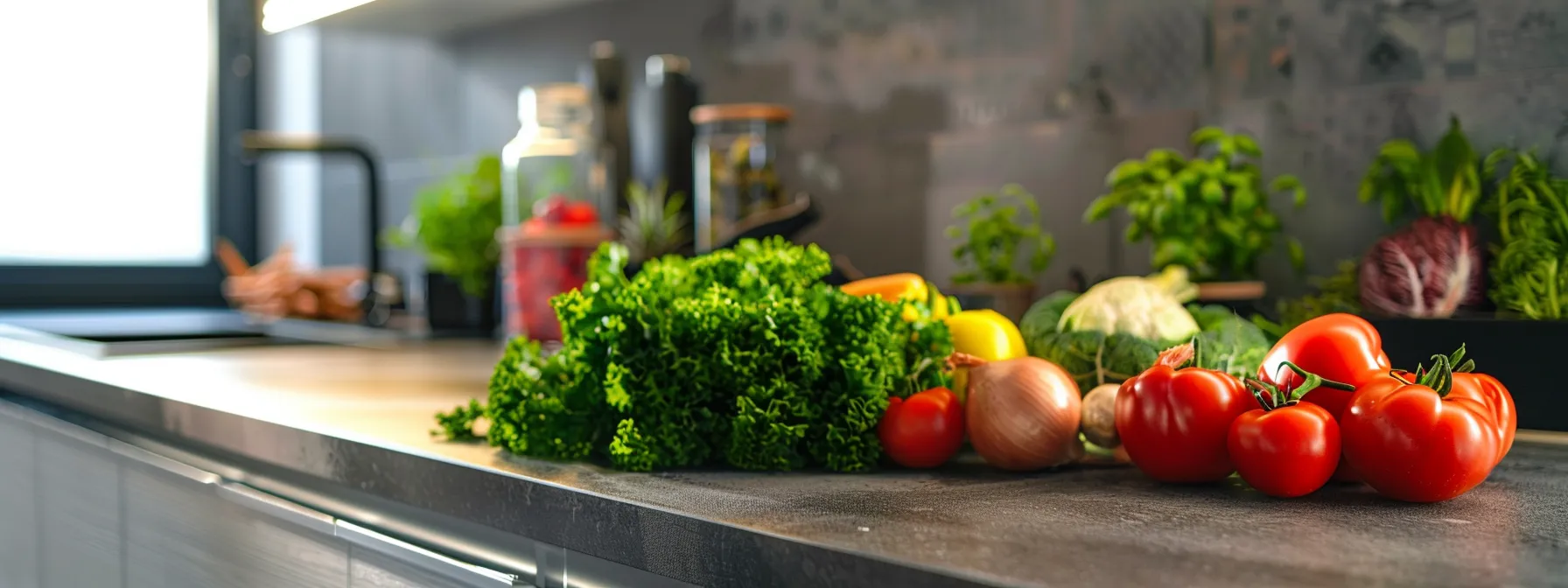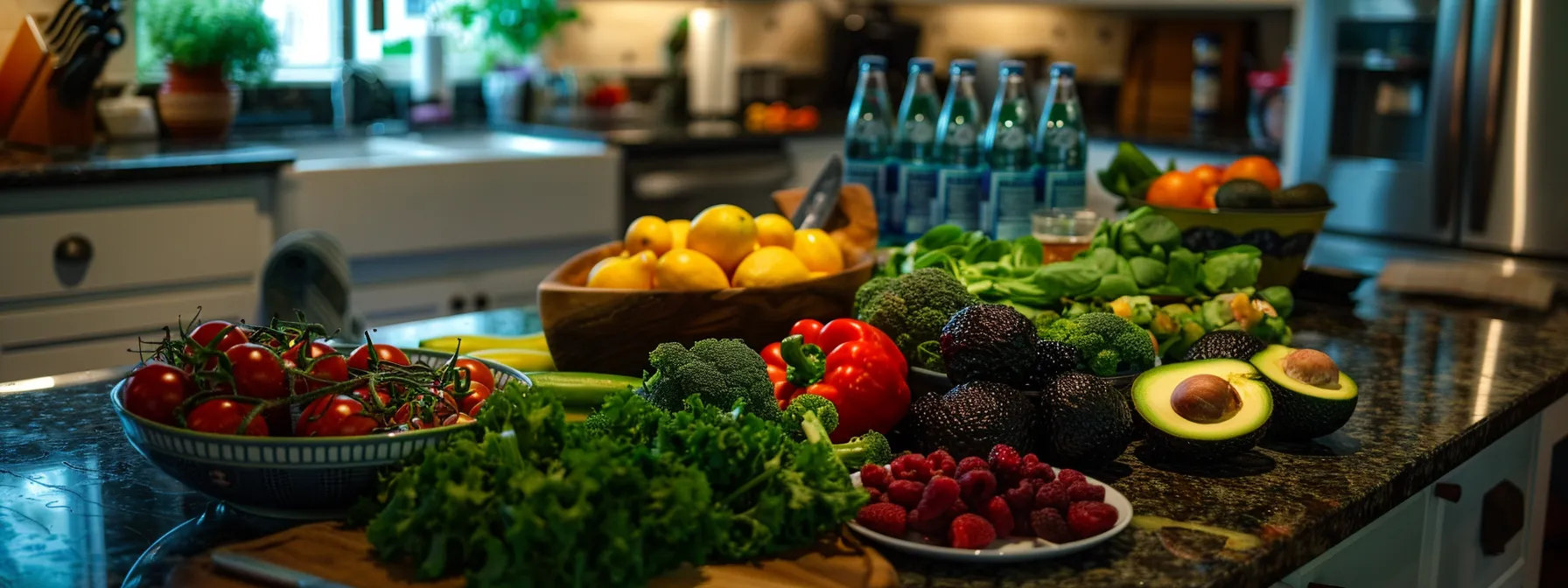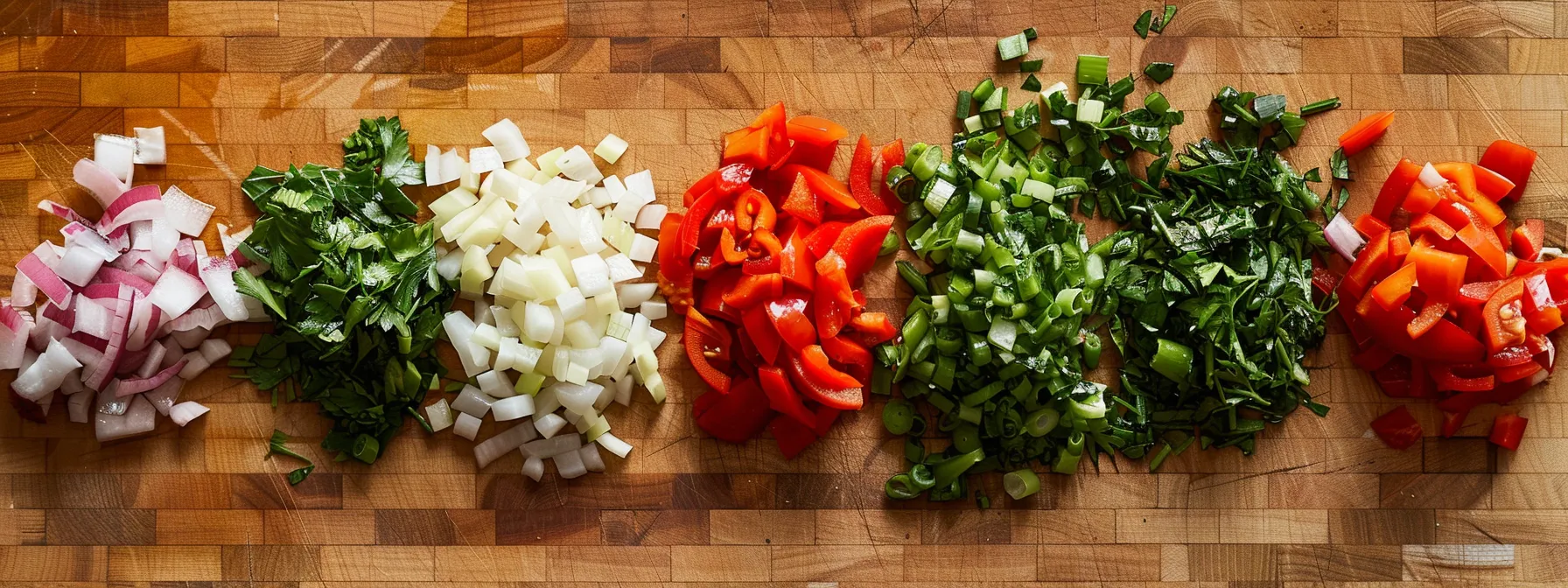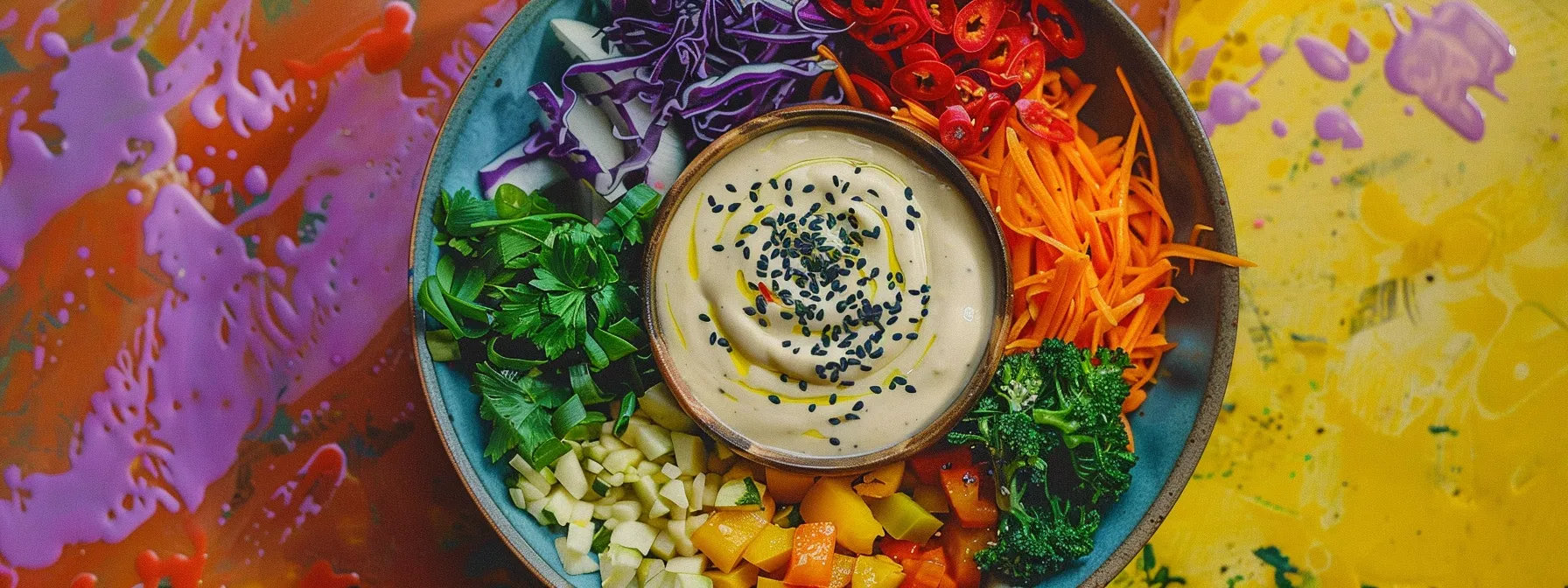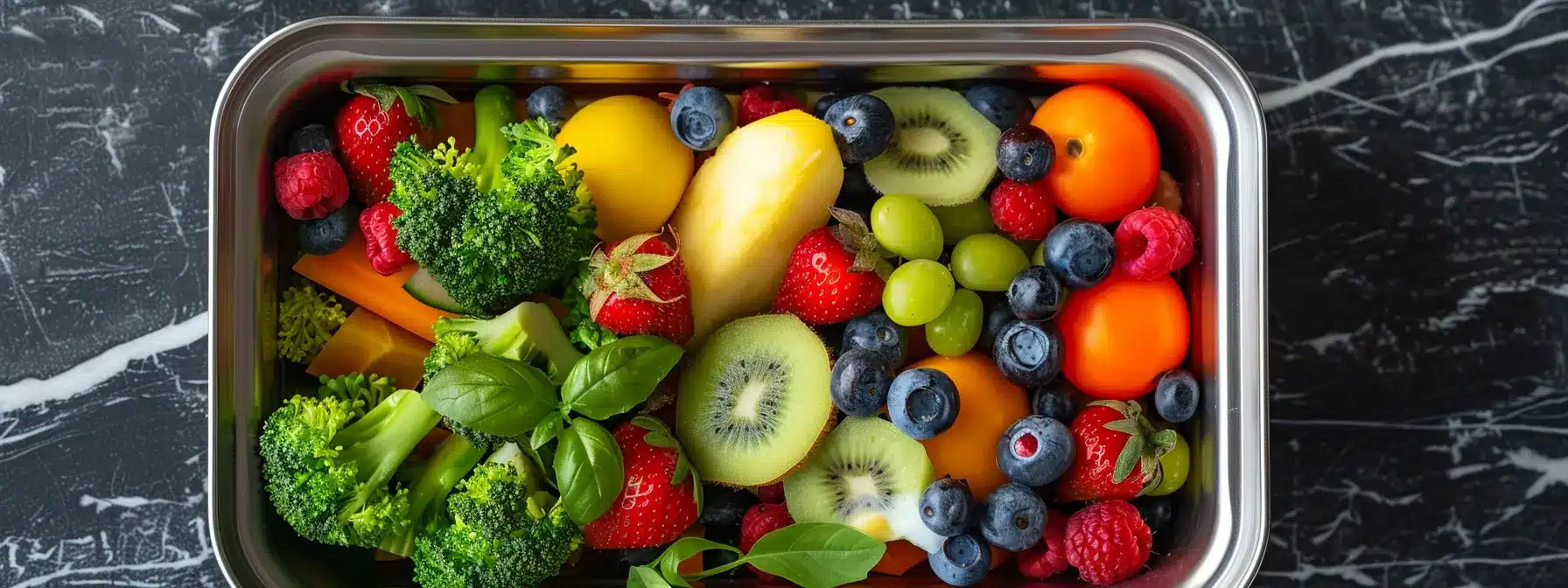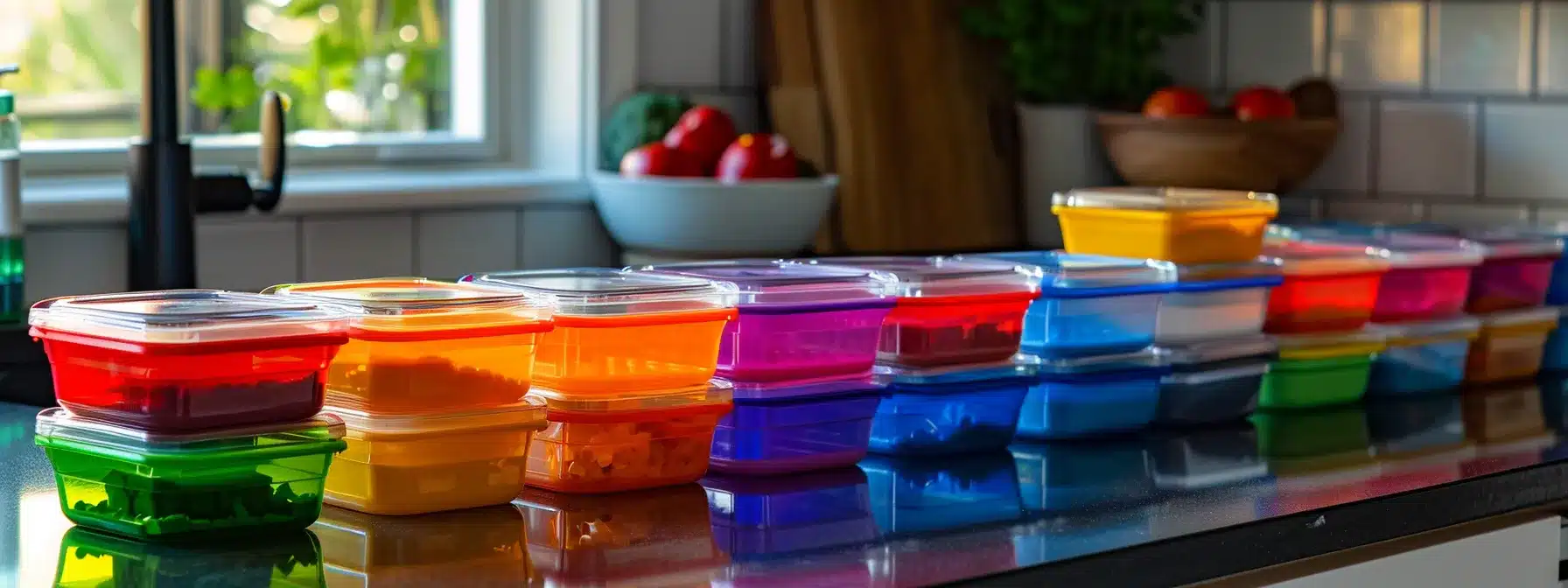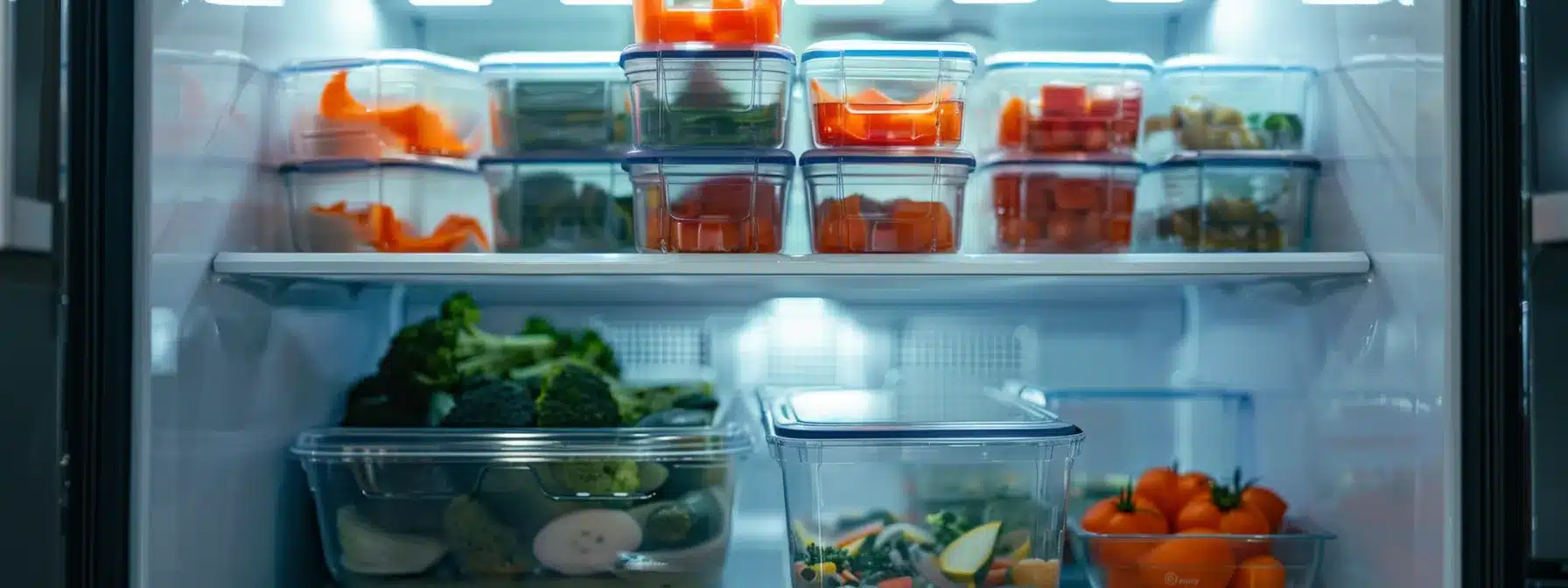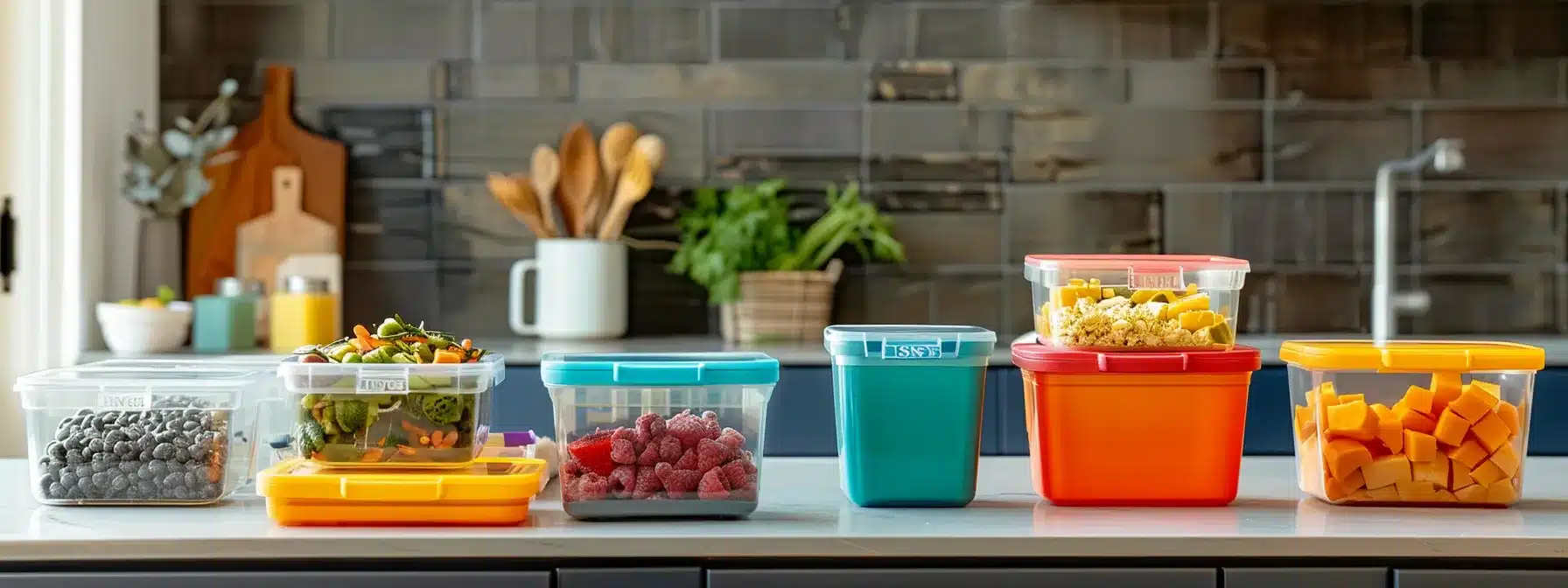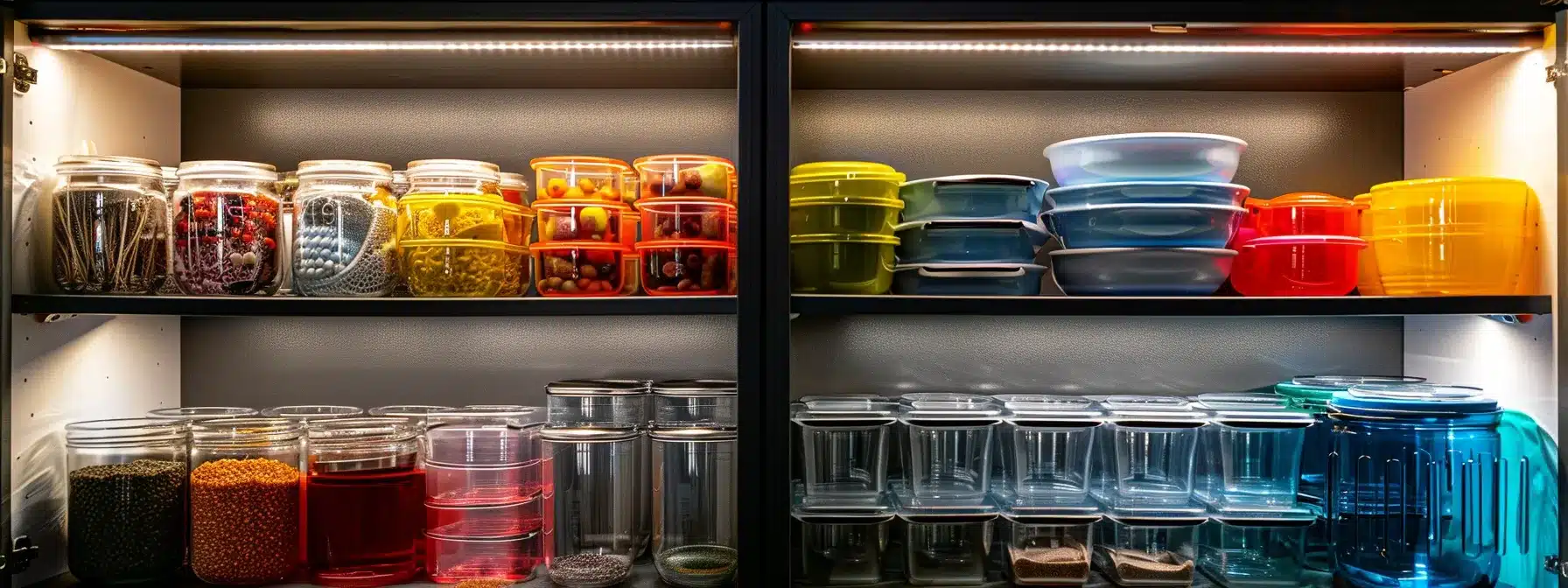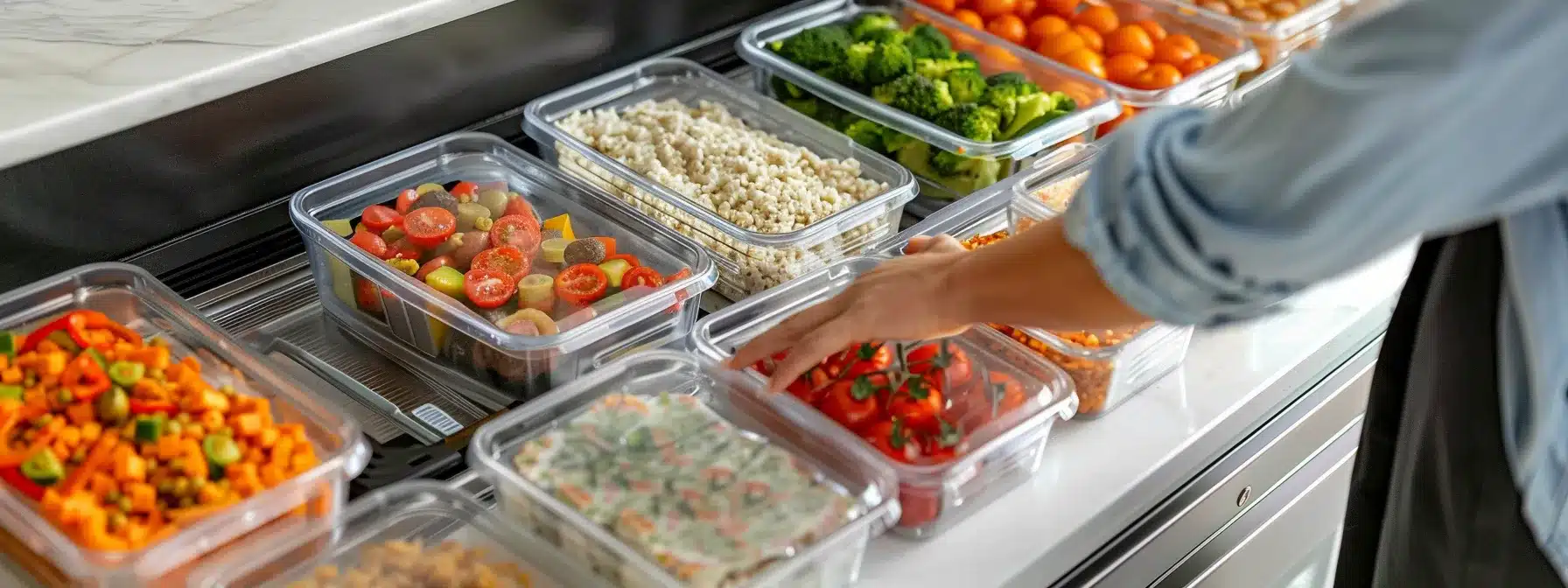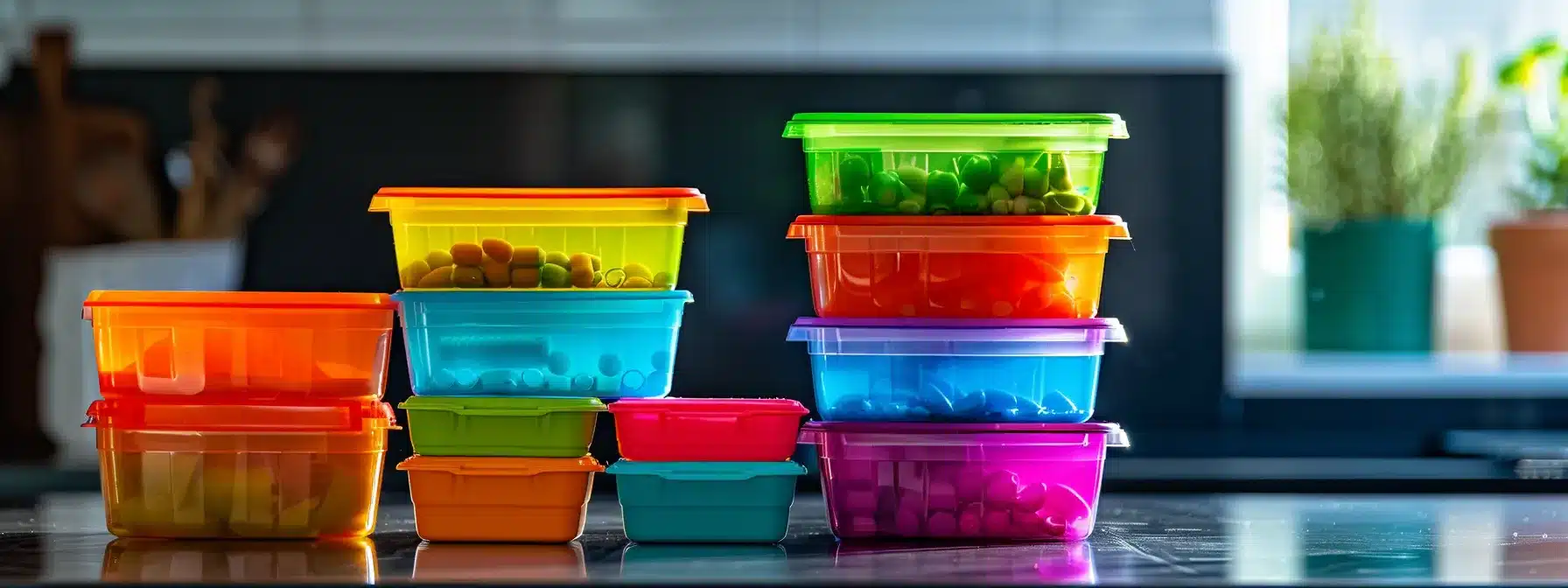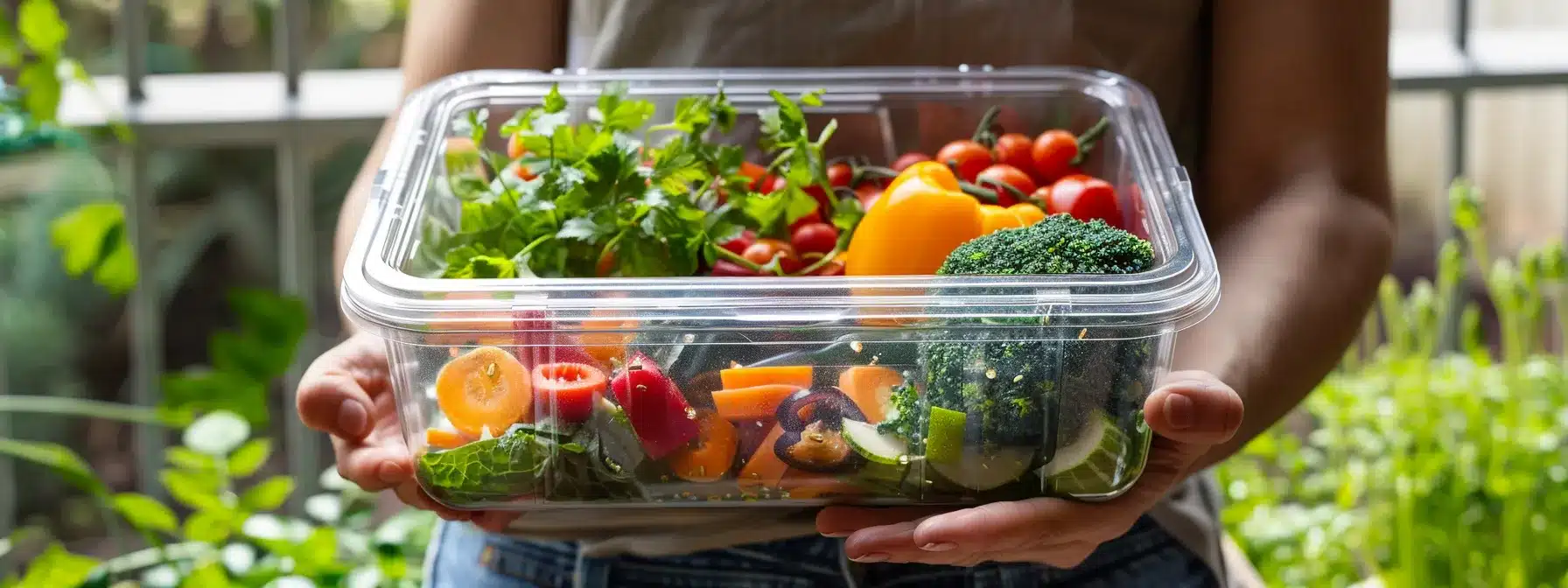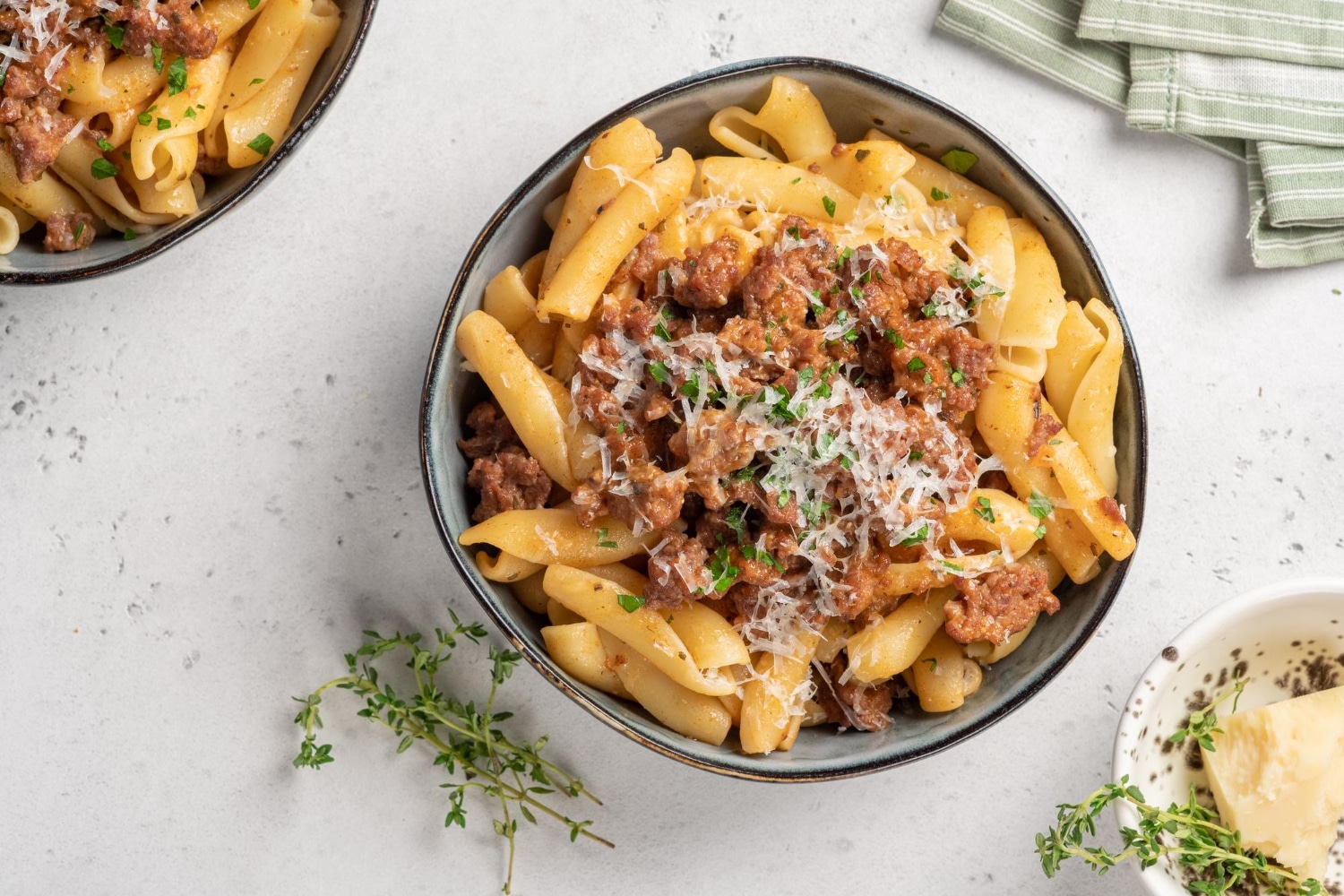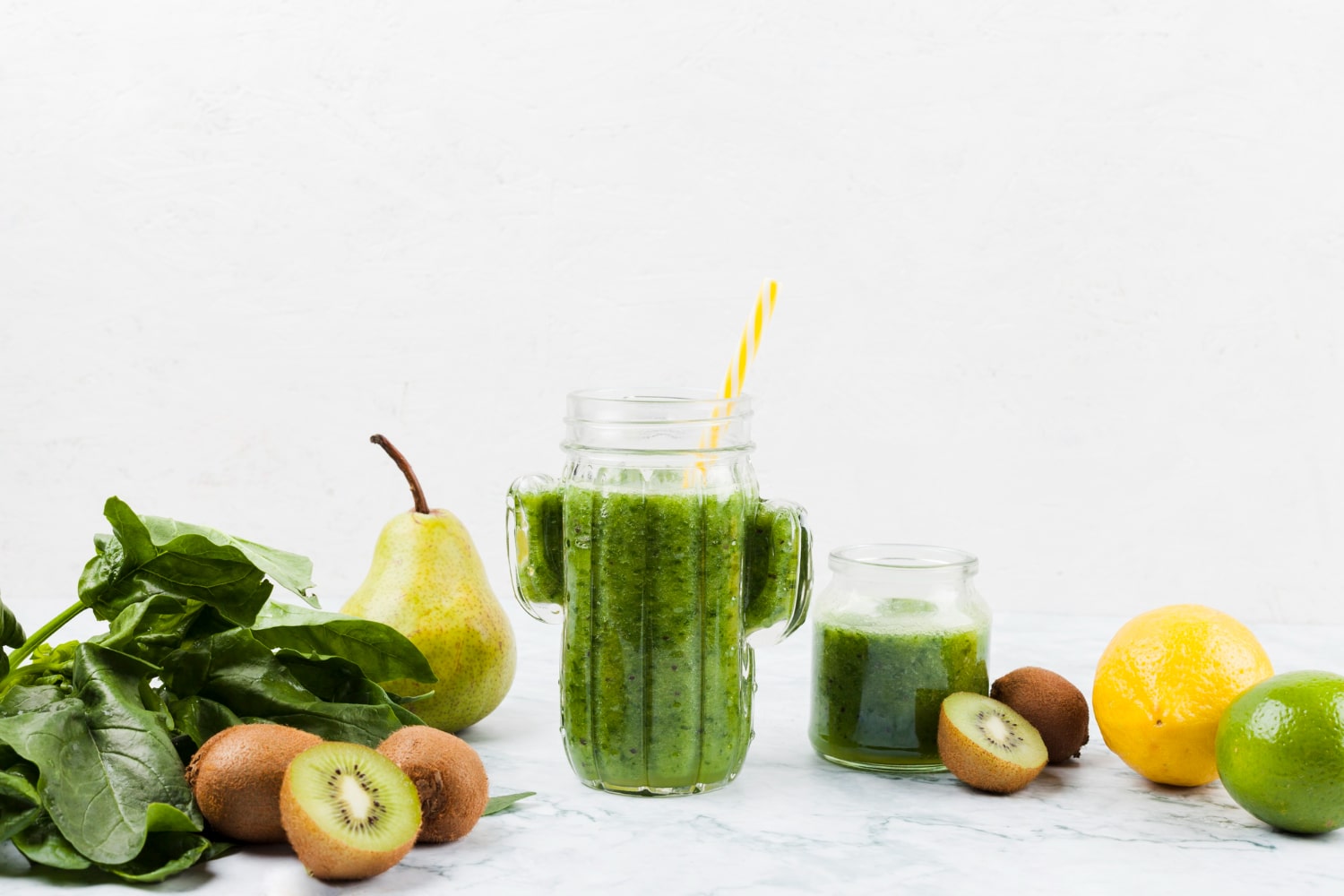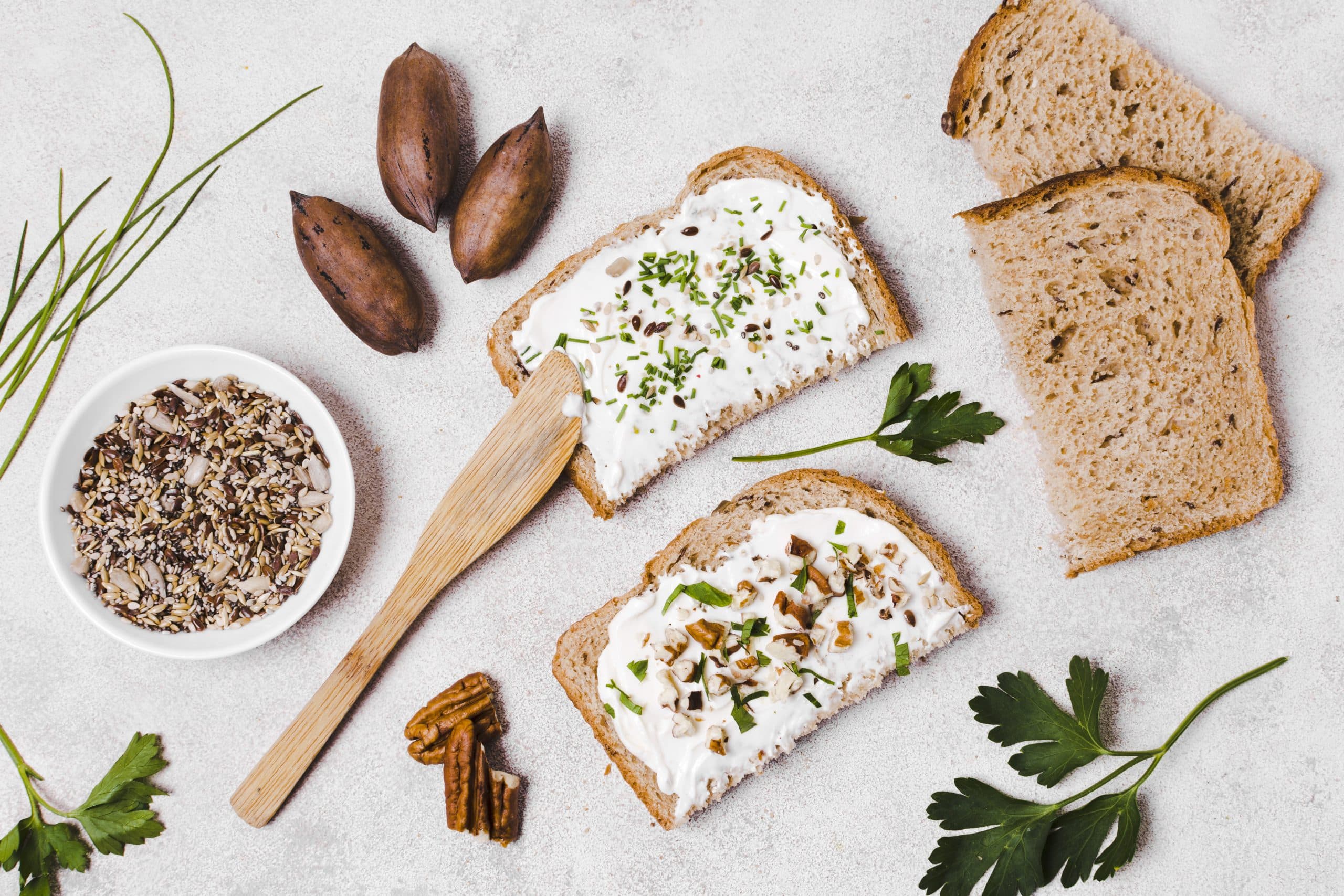Struggling to incorporate salmon into your diet or unsure how much water to drink daily? Effortless Healthy Meal Planning is your guide to simplifying these choices. In this article, you’ll learn the basics of nutritious meal preparation, discover tools that make the process manageable for beginners, and find strategies to overcome common obstacles. Whether it’s understanding the role of insulin in your body or mastering the measurement of a teaspoon of ingredients, we’ll equip you with knowledge for healthier habits. Jump into the bowl of meal planning with us, and you’ll walk away with the confidence to sustain a balanced diet for the long term.
Understanding the Basics of Healthy Meal Planning
Diving into healthy meal planning begins with setting your nutritional goals; understanding what your body needs is the cornerstone of fueling well. A balanced approach means paying attention to macronutrients, like the proteins in a chicken salad, and micronutrients, similar to the lycopene in tomatoes. Consideration of portion sizes ensures you’re fueling your body without overindulging. Think of the vivid variety a drizzle of olive oil adds to roasted vegetables or how different flours can alter the nutrition profile of your bread. Not only does this color and change add to the enjoyment of your meals, but it’s also essential for a well-rounded diet. Lastly, establishing a meal planning schedule that fits your lifestyle is crucial for consistency. These steps will guide you toward making informed choices about each ingredient you select and how you prepare your meals.
Defining Your Nutritional Goals
Setting clear nutritional goals is the first step in developing a healthy meal plan that satisfies both your palate and your dietary needs. Beginners might start by incorporating heart-healthy options like walnuts into their diet to replace less nutritious snacks. If your aim is to manage conditions such as hypertension, choosing lean proteins like beef in moderation and favoring spices over salt can help maintain both taste and health. Meanwhile, allowing room for treats like ice cream in small quantities helps prevent feelings of deprivation, which is essential for sustainable changes.
Understanding one’s personal health objectives can transform the act of eating into a nourishing ritual. For someone looking to gain muscle, swapping out unhealthy fats for the robust flavors and nutritional value of walnuts could be a key tactic. Alternatively, someone focused on weight management might explore creative recipes that elevate the natural taste of foods while limiting high-calorie options. A well-crafted meal plan creates a positive relationship with food, where each bite brings one closer to their wellness goals.
Balancing Macronutrients and Micronutrients
Integrating a balance of macronutrients and micronutrients into meal planning is a sustainable way to support an active lifestyle and the demands of regular exercise. For instance, adding lean pork to a dish can provide the essential protein needed for muscle repair, while tossing in a colorful array of bell peppers enhances the meal with vital vitamins and minerals. This strategic approach to nutrition ensures that individuals not only get the energy they need but also the nutrients that support overall health.
Consider the humble muffin, often overlooked as a health food, yet when made with whole grains, it becomes a vehicle for delivering complex carbohydrates and fiber, essential for sustained energy. Including ingredients like oats or bran, paired with diced bell peppers and small chunks of pork can transform this baked good into a balanced, nutrient-dense snack. This example showcases how everyday food choices can be tailored to fit within a well-rounded nutritional framework, aiding those on their journey to a healthier lifestyle.
Recognizing Portion Sizes
Grasping portion control is a linchpin in tailoring a simple healthy diet that fits your lifestyle and goals. A well-portioned plate might feature a slice of lean protein-filled tortilla espanola beside a colorful heap of coleslaw, offering a satisfying crunch without the guilt of added sugar. Adequately sizing meals allows for enjoyment of a diverse array of foods like creamy avocado, while effortlessly preventing overindulgence.
In the context of meal planning, the size of a serving can be the silent saboteur of nutritional intentions. By understanding that a fist-sized portion of chicken, a cupped handful of brown rice, or a half avocado provides a reliable gauge for single servings, individuals can confidently craft a menu that aligns with their health objectives. This awareness is fundamental in developing a habit that ensures every meal brings them one step closer to their wellness benchmarks without the stress of constant calorie counting.
Incorporating Variety and Color Into Meals
Including vibrant oranges from bell peppers or carrots not only adds a splash of color to a plate but also enhances a healthy diet with essential vitamins. Seasoning these colorful vegetables with herbs instead of butter or excessive fat keeps dishes flavorful and aligned with nutritional goals. This strategy of combining visual appeal with health benefits helps meal planners create appetizing and nourishing menus.
Introducing a rainbow of produce to meals is more than just aesthetic; it brings a diverse spectrum of nutrients to every dish. For example, the phytonutrients in dark leafy greens complement the beta-carotene in orange squash, offering a comprehensive nutritional profile beneficial for long-term health. Carefully selecting these ingredients not only brightens the meal but contributes substantially to a balanced diet, ultimately leading to better health outcomes.
Setting a Realistic Meal Planning Schedule
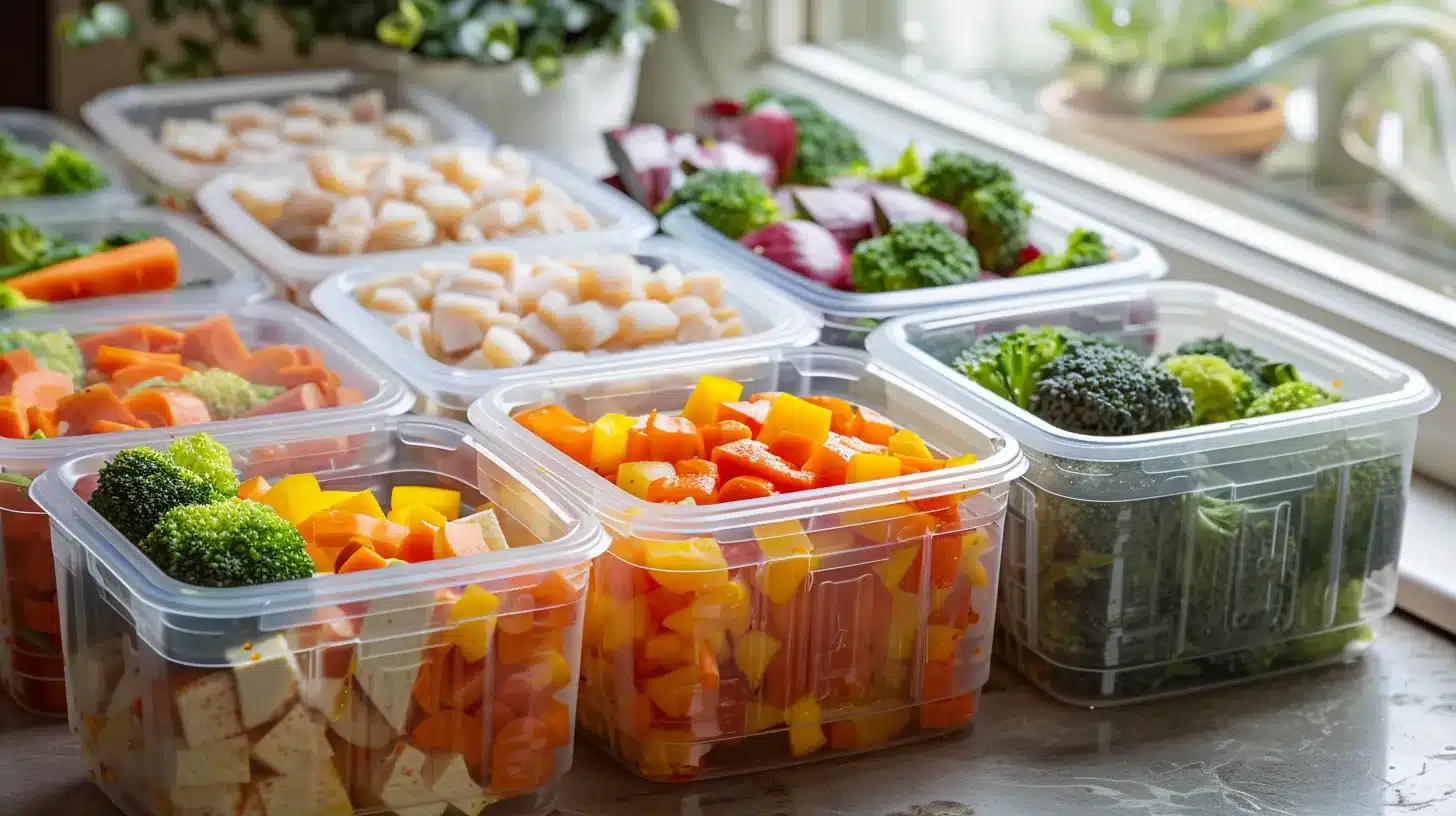
Establishing a meal planning schedule that respects your time constraints and routine can make adopting healthy eating habits more accessible. For example, incorporating a slow cooker into your weekly meal prep can yield nutritious, low-sodium dinners with minimal effort—ideal for those concerned about cardiovascular disease. Slow cooking also offers the convenience of having meals ready when needed, supporting a stress-free approach to healthy eating.
Another way to ensure a realistic meal plan is to designate time for tasks like baking, which can be done in larger batches to save time throughout the week. A kitchen stocked with home-baked, sodium-conscious bread or muffins aligns with both the desire for convenience and the necessity of managing sodium intake. This proactive step simplifies the process of healthy meal creation and leaves more time for self-care activities such as exercise or relaxation.
Essential Tools and Resources for Beginners
Embarking on a journey toward healthier eating starts with the right tools and knowledge. Essential kitchen equipment can streamline meal prep, while meal planning apps and templates aid in organization. Stocking your pantry with nutritious staples ensures blood health, weight management, and can aid in managing cholesterol. Learn grocery shopping strategies to secure the freshest ingredients like zucchini and rice without breaking the bank, and discover practical, time-saving techniques designed for busy lifestyles. The sections that follow will delve into these crucial areas, offering actionable advice to enhance your meal planning routine effortlessly.
Must-Have Kitchen Equipment for Easy Meal Prep
Embarking on the journey of creating simple healthy meals for weight loss is more rewarding with the right kitchen tools. A quality set of knives enables effortless chopping of whole grains and fibrous vegetables, while non-stick cookware allows for cooking with less olive oil, reducing unnecessary fat intake and supporting heart health. These basics not only simplify meal prep but also encourage the preparation of healthier dishes.
Furthermore, owning a digital kitchen scale can transform the way one approaches meal planning. Accurate measurements ensure portion control, crucial for individuals managing their weight or disease such as diabetes. From precisely measuring a serving of grain to gauging the right amount of egg for protein, reliable kitchen equipment fosters consistency and helps maintain nutritional balance in every meal crafted at home.
Utilizing Meal Planning Apps and Templates
When diving into a simple diet plan for weight loss, meal planning apps and templates become invaluable. They effortlessly manage grocery lists and nutritional information, turning a kale and cheese-laden toast into a heart-healthy delight at your fingertips. These digital assistants simplify the processes, ensuring that adhering to dietary plans occurs without the guesswork, allowing for more time to enjoy the results of a well-prepared meal.
Using technology also means one can easily track their progress toward achieving a healthier lifestyle through data visualization. For example, one could monitor the inclusion of superfoods like kale in their diet or adjust portion sizes of cheese to fit their heart-healthy objectives. With customizable templates and meal planning apps, the user finds support in maintaining a balanced, nutritious diet that aligns with their weight loss goals.
Stocking Your Pantry With Healthy Staples
A well-stocked pantry is fundamental for anyone beginning the journey of healthy meal planning. Items like fresh fruit and carrots are versatile staples that align with the Dietary Guidelines for Americans, offering key vitamins and fiber. Keeping natural sweeteners such as honey on hand allows for healthier alternatives to refined sugars when sweetening oatmeal or drizzling over a fresh fruit salad.
When preparing balanced meals, a simple homemade vinaigrette using pantry ingredients like olive oil, vinegar, and honey can transform a dull salad into a delectable dish without the added preservatives found in store-bought dressings. It’s such smart, practical swaps that enable individuals to adhere to their dietary guidelines comfortably while enjoying the food they eat.
Grocery Shopping Tips for Fresh and Affordable Ingredients
Finding a balance between cost and quality is essential when grocery shopping for a simple diet plan. Select seasonal produce like sweet potatoes and onions to get the most flavor and nutritional value for your money. These versatile staples can be roasted, sautéd, or baked, providing a nutritious base for any meal while enhancing your diet with essential vitamins and minerals.
When focusing on incorporating whole grains into your meals, look for bulk-bin options that often offer a lower price point. Grains like quinoa or brown rice can serve as a hearty foundation for building a fulfilling dish. Additionally, opting for items like peanuts in bulk can be both cost-effective and a great way to add a healthy, protein-packed crunch to snacks and meals, tying together the elements of a nutritious and simple diet plan.
Time-Saving Techniques for Busy Individuals
For busy individuals, efficient meal planning often means having quick yet nutritious options at hand. Preparing large batches of oatmeal infused with ripe cherries and storing them in single-serving containers can facilitate a no-fuss, warm breakfast throughout the week, ensuring consistent nutrition and saving precious morning time. Crafting healthy easy meals for weight loss doesn’t require hours in the kitchen; it’s about smart, straightforward preparations that serve both well-being and a tight schedule.
Another effective time-saver is embracing the simplicity of one-pot dishes like hearty soups. Including a medley of vegetables, lean proteins, and whole grains, soups are easily cooked in bulk and stored for convenience, offering a fulfilling solution that supports both weight management and nutritional needs. With these dishes, individuals can enjoy a satisfying, balanced meal with minimal preparation time, making healthy eating a practical reality despite a bustling lifestyle.
Step-by-Step Guide to Creating Simple Healthy Eating Plans
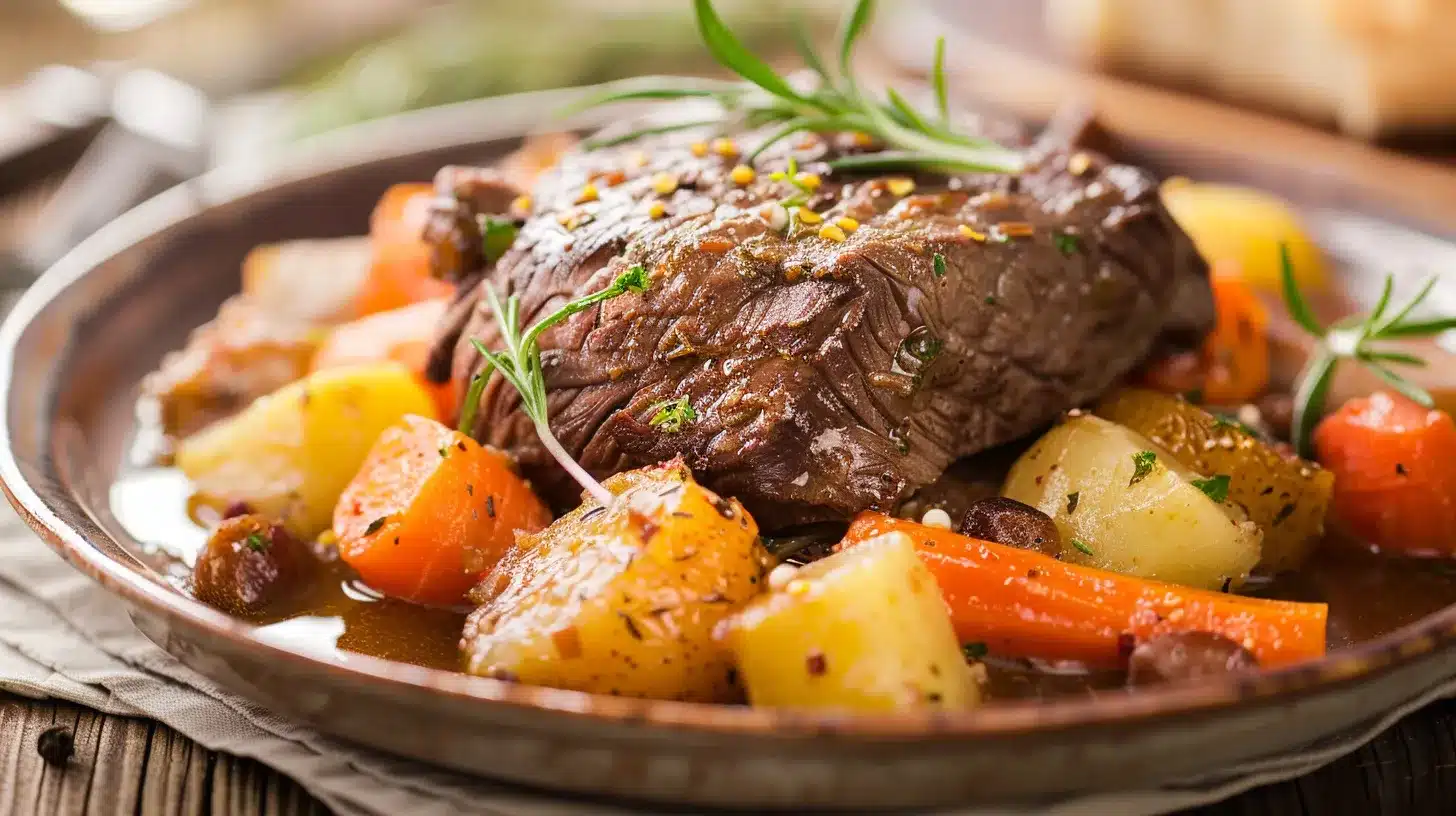
Embarking on the path to healthier eating begins by evaluating your current diet and identifying areas of improvement. The journey encompasses selecting recipes that align with your daily routine, whether it’s a hearty tuna casserole for dinner or a quick granola and raspberry snack. Efficient meal planning requires a structured approach, organizing meals by the week and day for coherence. Preparing a shopping list tailored to these meals ensures you have all the necessary ingredients on hand. Importantly, being responsive to feedback and making adjustments to your eating plans fosters continual progress toward your health objectives. This segment serves as your navigational tool for devising a simple and sustainable healthy eating strategy.
Assessing Your Current Eating Habits
To initiate a transformation towards healthier eating, scrutinizing your current habits is essential. Analyze your daily consumption, noting how often foods like fresh vegetables and beans appear on your plate compared to calorie-dense options such as potato chips or items laden with cream. Recognizing patterns and frequency of these food choices lays the groundwork for meaningful nutritional changes.
Once you have a clear picture of your existing diet, consider the balance and variety of foods consumed. Assess whether your meals tend to be vegetable-forward or if they lack sufficient fresh ingredients, providing an honest baseline from which to develop a more nutrient-rich meal plan. Identifying these starting points is critical for anyone looking to enhance their diet with healthful, flavorful components like fresh beans and roasted potatoes.
Choosing Recipes That Fit Your Lifestyle
When integrating meal planning into your lifestyle, selecting recipes that account for busy schedules and personal taste is crucial. Opting for dishes with wholesome ingredients like lentil soup, rich in protein, or a vibrant spinach salad, packed with antioxidants, ensures nutritional value without added sugar. Quick mixes like peanut butter on whole-grain toast offer a simple, satisfying, and health-conscious alternative to overly processed snacks, marrying convenience with nourishment.
Prioritizing recipes that are both simple to prepare and cater to personal health goals transforms the meal planning process into an effortless routine. A novice in the kitchen might start with a stir-fry teeming with colorful vegetables and brown rice, which provides a hearty base to include a variety of proteins such as tofu or chicken. The key is in gravitating towards recipes that balance ease of preparation with the rich flavors and nutrients essential for a well-rounded diet.
Organizing Meals by Week and Day
Effectively organizing meals by week and day is the linchpin of successful meal planning, particularly for maintaining consistent health and managing blood pressure through diet. This entails allocating specific days for various food types, ensuring a balance of nutrients across the week. Planning ahead allows one to incorporate staples like apple slices as snacks or heart-healthy ingredients in main dishes, which aligns with cooking habits and simplifies grocery shopping.
By laying out a week’s worth of meals, individuals can manage their cooking time efficiently, dedicating certain days to preparing bulk dishes that serve multiple meals. For example, Sunday might be reserved for roasting a batch of vegetables which can then be incorporated into quick lunch salads or hearty dinner sides throughout the week. This structured approach not only streamlines the cooking process but also aids in sticking to a health-conscious meal plan.

Creating a shopping list focused on achieving your weight and wellness goals starts with staples like cucumber and lettuce, ensuring you have fresh and nutritious ingredients ready for quick salads and snacks. A thoughtfully prepared list keeps your pantry stocked with whole grains such as wheat, which can be the foundation of healthy meals, assisting in maintaining a balanced weight without the need for last-minute, unhealthy food choices.
While drafting your list, consider the quantity of each item to avoid over-purchasing, thus controlling both waste and weight. Ensuring you have a variety of vegetables, lean proteins, and whole wheat products allows for versatile meal planning that keeps nutrition on track. A well-considered shopping list translates into a more efficient kitchen, helping you navigate meal preparation with ease as you embark on healthier eating practices.
Adjusting Plans According to Feedback and Progress
Adopting a flexible mindset is essential when it comes to easy healthy meal prep for weight loss. For instance, if a lunch of pasta salad with a heavy dressing feels too indulgent, substituting olive oil and garlic can make a flavorful yet lighter alternative. Those managing diabetes can benefit from this adaptability, adjusting carbohydrate intake by using zucchini noodles instead of traditional pasta to maintain blood sugar levels.
Progress in healthy eating is rarely linear; feedback from one’s body and taste preferences should influence future meal planning. When a particular dish, such as a garlic-rich pasta salad, leads to unintended weight fluctuations or blood sugar spikes, it merits revision. It’s through such iterative refinements, taking the body’s cues into account, that individuals can tailor an easy healthy meal prep strategy that supports weight loss and diabetic health.
Quick and Nutritious Meal Ideas for Every Day
Embarking on effortless healthy meal planning begins with daily nourishment that’s both appealing and beneficial. Energizing breakfast options set the tone for a day filled with productive energy, while satisfying lunches help maintain focus. In the evening, wholesome dinner recipes invite the whole family to gather and enjoy. To stay on track, consider healthy snacks, like guacamole, to curb cravings; and for a sweet note, explore delicious desserts with a healthy twist. These meal ideas, utilizing ingredients such as fish, brown rice, and an array of fresh foods, support balanced eating effortlessly.
Energizing Breakfast Options to Start Your Day
Kicking off the day with a high-protein breakfast can lead to sustained energy levels and improved concentration. A quick scramble of egg whites with diced chicken and a sprinkle of herbs offers a nourishing and flavorful start, folding in lean protein which is crucial for a balanced diet. Meanwhile, a smoothie blended with cottage cheese, your favorite fruits, and a handful of spinach delivers both protein and necessary vitamins, setting a robust tone for the day ahead.
For those focused on wellness, integrating protein into breakfast is a strategy that supports muscle health and satiety. A bowl of cottage cheese topped with a drizzle of honey and fresh berries serves as a refreshing and satisfying option, while a grilled chicken breast paired with avocado on toasted whole grain bread provides a heartier meal with ample protein to fuel the body’s morning activities. These simple meals easily align with dietary goals, offering convenient yet nutritious choices for any morning routine.
Satisfying Lunches That Keep You Focused
Midday meals can make or break your focus, so a balanced lunch is crucial for mental clarity. A pasta dish with whole-grain noodles, tossed with roasted chickpea and broccoli, offers a nourishing combination of complex carbohydrates and fiber to sustain energy levels. This meal, dressed lightly with olive oil and a squeeze of lemon, provides a flavorful yet simple solution that does not compromise on either taste or nutrition.
Incorporating a side of Greek yogurt topped with a handful of almonds can not only satisfy the palate but also supply protein and healthy fats for a cognitive boost. The creaminess of the yogurt pairs well with the crunchy texture of the almonds, making for a meal that is as satisfying as it is functional. It’s a straightforward, time-efficient choice that supports productivity through the rest of the day.
Wholesome Dinner Recipes for the Whole Family
Family dinners provide a prime opportunity to serve meals that are as nutritious as they are delightful. A lean meatloaf made with extra-lean ground beef or turkey, mixed with finely chopped vegetables and bound with whole wheat breadcrumbs, offers a protein-rich centerpiece to the meal. Drizzling a tablespoon of olive oil-infused salsa over the top before baking infuses the dish with moisture and a burst of flavor that pleases both adults and children alike.
Creating a culinary experience that caters to various taste preferences can be as simple as incorporating a versatile ingredient like olive. A colorful chicken stir-fry, with vibrant bell peppers and a hint of wine for depth, ticks all the boxes for a wholesome dinner. Each mouthful, dressed with a tablespoon of zesty salsa, brings healthful ingredients together in a symphony of taste, illustrating that a commitment to nutrition can still captivate the family’s palate.
Healthy Snacks to Curb Cravings
When noon whispers sweet nothings of vending machine snacks, a recipe rolls in to save the day with the perfect blend of taste and health: apple slices dusted with cinnamon. This snack is a hallmark of a simple diet to lose weight, promising to sate the sweet tooth while dodging saturated fat. Dietitians nod in approval, with the gentle spice boosting metabolism and the crunch serving as a satisfying distraction from less virtuous cravings.
Fending off hunger pangs between meals becomes an effortless feat with hummus paired with crisp vegetables—a staple for anyone keen on mastering healthy meal planning. Crafting this combo aligns with the ease of a beginner’s guide, offering a high-fiber alternative to curb appetite without the guilt. The balance of protein and healthy fats supports lasting satisfaction and aligns seamlessly with recommendations from nutrition experts for a heart–healthy diet.
Delicious Desserts With a Healthy Twist
Satisfying a sweet craving doesn’t mean abandoning your simple meal prep for weight loss. Consider a dessert of chilled banana slices topped with a drizzle of honey and a sprinkle of oat crumble. This treat provides fiber from the oats and natural sweetness from the banana, making it an ideal indulgence for those wanting a healthier option without sacrificing flavor or texture.
As the day winds down, one might crave something sweet after dinner. A puree of roasted turkey paired with a dash of cinnamon can serve as an unconventional yet protein-rich dessert alternative. This innovative approach aligns with a nutritious breakfast philosophy, turning traditional savory ingredients into a sweet, satisfying end to any meal while keeping health goals in check.
Overcoming Common Meal Planning Challenges
Embarking on a journey toward healthy eating involves more than just choosing the right foods; it’s about overcoming practical challenges that can hinder your success. From dealing with limited time and resources to managing diverse dietary requirements such as carbohydrate control for a Mediterranean diet, meal planning takes flexibility. Strategies for staying motivated, budget-conscious grocery store visits, and engaging family members in the process are essential for building a sustainable habit. This guide addresses common obstacles like finding time to whip up a nutrient-packed smoothie, balancing healthful choices like hummus with preferences, and crafting meals that delight without draining the wallet.
Dealing With Limited Time and Resources
Creating a nutritious menu in the midst of a frenetic schedule presents a familiar quandary for many. To combat the scarcity of time and the ever-looming calorie count, one might consider a repertoire of quick-fix meals; a feta-strewn salad or a slice of whole-grain bread with a smear of avocado offers up a double bounty: expedience and health. The key to success lies in selecting ingredients that are not only simple to prepare, like couscous, which cooks in a flash, but also lend themselves to a variety of meals, ensuring that the pursuit of well-being is neither time-consuming nor monotonous.
A well-planned grocery list focusing on versatile staples like bread and feta can streamline the meal preparation process, transforming a scarce pantry into a treasure chest of possibilities. When one’s resources are limited, the smart combination of shelf-stable items, such as couscous, with fresh produce enables the creation of balanced and satisfying dishes. With a judicious selection and a touch of creativity, healthy meal planning becomes accessible, squaring the circle of maintaining a nutritious diet amid a jam-packed schedule.
Managing Dietary Restrictions and Preferences
Managing dietary restrictions and preferences is central to formulating simple healthy eating plans. When crafting a menu that caters to specific needs, such as weight loss or gluten intolerance, integrating alternatives is key. For instance, swapping traditional sausage with a leaner turkey variant or a plant-based option in a classic Greek salad ensures adherence to dietary guidelines without compromising flavor or satisfaction.
Moreover, the substitution of sugary beverages with nutrient-rich juice can significantly enhance meal plans aimed at health and wellness. A freshly squeezed orange juice, rich in vitamin C, paired with a balanced breakfast, can kickstart a day focused on weight loss more effectively than a calorie-laden drink. By considering these alternatives, meal planning becomes a personalized, inclusive process that accommodates varying health requirements.
Staying Motivated and Avoiding Burnout
Staying motivated while meal planning can be made easier by incorporating enjoyable superfoods that excite the palate. A sprinkle of crushed nuts on a morning oatmeal, or a citrus dressing over a quinoa salad can elevate the simplest dishes, infusing them with both flavor and essential nutrients like vitamins and protein. When planning is centered around these nutritious, vibrant ingredients, it reinforces the connection between good food and well-being, helping to stave off the monotony that may lead to burnout.
Another key to maintaining enthusiasm is recognizing the small victories, such as making a smooth transition from white to quinoa or integrating a variety of seeds into your diet. These changes not only introduce new textures and flavors but are also packed with fiber and vitamins, contributing to overall health. Acknowledging these positive steps reinforces one’s commitment to a healthy lifestyle, providing the impetus to continue experimenting and enjoying the process of meal planning.
Budget-Friendly Meal Planning Strategies
Embarking on an easy healthy eating plan while on a budget begins with understanding how to shop smart. Purchasing versatile essentials like milk, which provides an array of nutrients including calcium and vitamin D, enables one to prepare a variety of cost-effective meals and snacks. By focusing on staple items that offer multiple nutritional benefits, adopters of a healthy lifestyle can craft an affordable diet without sacrificing essential nutrients.
One doesn’t need to overshadow financial constraints to maintain a nutrient-rich diet. For instance, bulk buying whole foods like rice and beans pairs affordability with a hefty nutritional profile, essential for energy and overall health. This strategy allows for the preparation of multiple meals throughout the week from a single, economical purchase, demonstrating that a nutrient-dense menu can align with careful spending habits.
Involving Family Members in the Process

Incorporating family members in healthy meal planning can greatly enhance the likelihood of success and sustainability. By taking into account each individual’s preferences and nutritional needs, one cultivates a collective investment in the meal plan. This collaborative approach not only diversifies the menu but also disseminates the responsibility, making the task less daunting for the primary planner and transforming mealtime into a shared educational experience.
One practical method for engaging family members is to assign each person a specific role or day of the week to choose or prepare a meal. This distributes the workload and encourages involvement in healthy eating habits. Not only does this process empower everyone, particularly children, with valuable life skills in nutrition and cooking, it also fosters a sense of ownership and may lead to more enthusiastic participation in eating the prepared healthy meals.
Tips for Maintaining Long-Term Healthy Eating Habits
Maintaining a healthy diet over the long term hinges on several key practices. Tracking your progress and celebrating milestones helps reinforce positive behaviors, while staying informed with continual education on nutrition ensures you’re up-to-date on wellness trends. Adapting your meal plans as your lifestyle and needs evolve keeps your diet relevant and effective. Building a support network provides encouragement, and setting fresh goals propels ongoing improvement, keeping you dedicated to your health journey.
Tracking Progress and Celebrating Achievements
Charting progress in diet and nutrition is vital for individuals on their journey to healthier living. By keeping a food journal or using an app to track their meals and physical activity, individuals can visibly measure their improvements, from enhanced energy levels to weight loss. Celebrating these milestones not only bolsters self-esteem but also reinforces the commitment to nutritious meal planning, serving as a motivational tool to continue making healthy choices.
Progress can take many forms and recognizing each achievement, whether small or large, provides a consistent stream of encouragement. An individual may celebrate by trying a new recipe or enjoying a favorite dish modified to fit their healthy eating goals. Through positive reinforcement, such as acknowledging a week filled with balanced meals, individuals can stay motivated and maintain their efforts toward a long-term commitment to healthy meal planning.
Continuing Education on Nutrition and Wellness
Expanding knowledge in nutrition and wellness is an ongoing endeavor that supports the maintenance of healthy eating habits. Staying abreast of the latest dietary research helps individuals refine their meal planning strategies, ensuring they’re based on current science. Applying this continuous learning process, one remains equipped to make informed food choices that benefit overall health and vitality.
Fostering an understanding of how various nutrients impact the body can significantly enhance the effectiveness of a meal plan. For example, learning about the anti-inflammatory properties of omega-3 fatty acids may encourage the inclusion of fish or chia seeds in one’s diet. This not only diversifies the palate but also provides practical benefits, such as improved cardiovascular health, central to one’s well-being.
Adapting Meal Plans to Changing Needs
One’s dietary needs evolve over time, a fact that necessitates the regular adaptation of meal plans to remain aligned with current health goals and lifestyle changes. For example, an individual who takes up a new fitness regimen may require increased protein to support muscle recovery, prompting a menu refresh that includes more lean meats and plant-based protein sources.
Similarly, as individuals age or experience changes in health status, such as the onset of a medical condition, their nutritional requirements can shift. A person diagnosed with diabetes, for example, needs to integrate a consistent carbohydrate count into their meals, which could involve substituting high-glycemic foods with lower-glycemic alternatives like sweet potatoes and quinoa to manage blood sugar levels effectively.
Building a Supportive Community
Building a supportive community is a cornerstone of sustained healthy eating. This network, comprising friends, family, or a local support group, can offer the motivation and accountability one needs when the path to healthy eating presents challenges. They provide encouragement, share healthy recipes, and even participate in meal prep, creating an environment that nurtures and promotes a commitment to nutritional well-being.
Moreover, a supportive community presents opportunities for learning and exchanging ideas that can significantly enhance one’s meal planning repertoire. They can introduce new and exciting dishes that align with one’s dietary goals, creating a diverse and adaptable meal plan. Engaging with such a community fosters a shared pursuit of health, making the journey toward long-term dietary success a collective, rather than solitary, venture.
Setting New Goals for Ongoing Improvement
Adjusting our sights on new objectives is crucial to progressing in our healthy meal planning journey. Altering meal plans to include current wellness trends, like plant-based proteins or ancient grains, can rejuvenate enthusiasm and commitment to a balanced diet. Individuals may find that integrating these emerging nutritional powerhouses can bring novel flavors and health benefits to their kitchens, keeping their diets dynamic and aligned with their ever-evolving wellness goals.
For continuous improvements in healthy eating habits, it’s beneficial to periodically review and revamp meal plans to address nutritional gaps or lifestyle changes. Whether one has adopted a new fitness program requiring more protein or encountered stressors that impact eating patterns, recalibrating their meal strategy ensures it remains supportive and effective. By setting incremental goals, such as incorporating more leafy greens or hydrating foods, they can achieve a steady enhancement of their overall diet quality.
Conclusion
Effortless healthy meal planning is pivotal for achieving and sustaining nutritional goals, offering a structured approach adaptable to individual needs and lifestyles. It balances convenience with nutrition, making it accessible to prepare meals packed with essential vitamins and minerals without overwhelming time investment. By utilizing the right tools, techniques, and a supportive community, individuals can navigate dietary challenges and maintain long-term healthy habits. This beginner’s guide provides a foundation for anyone to create nourishing meal plans, ensuring a healthier, more vibrant life.


